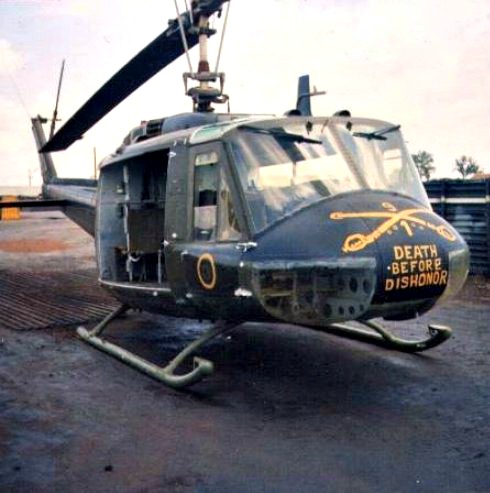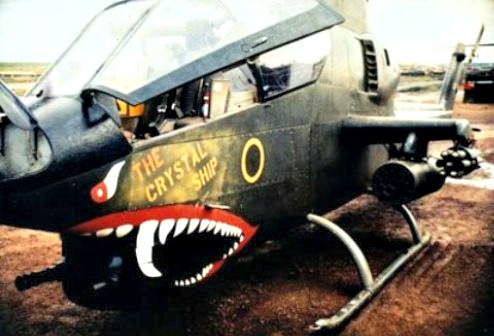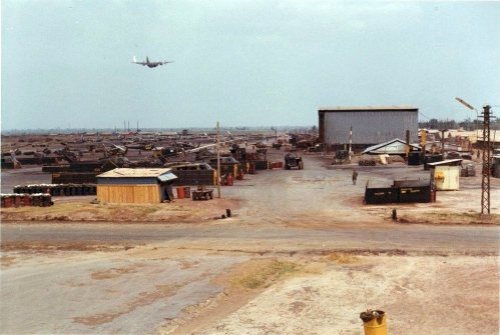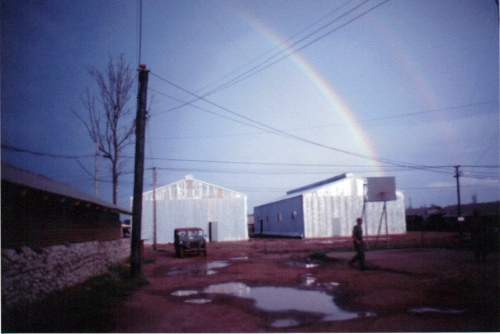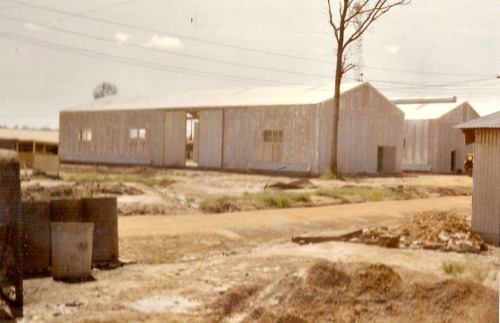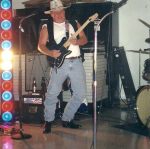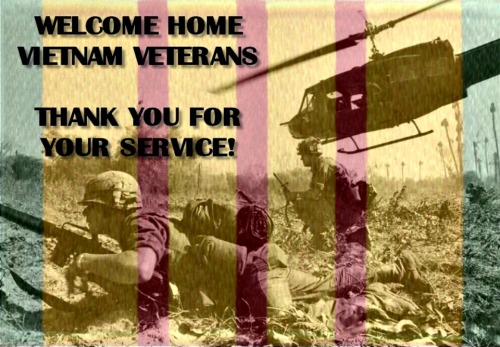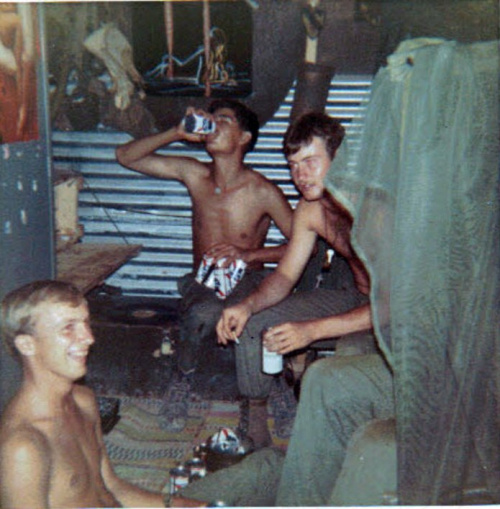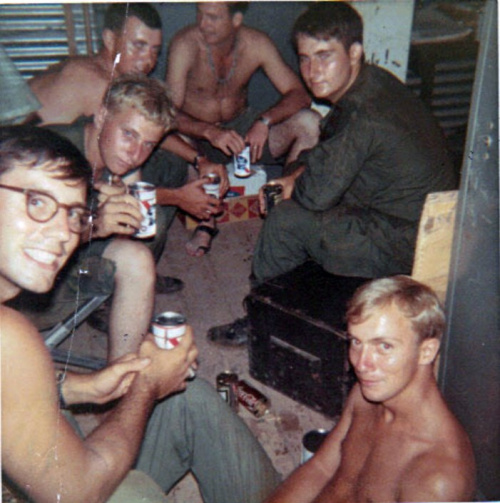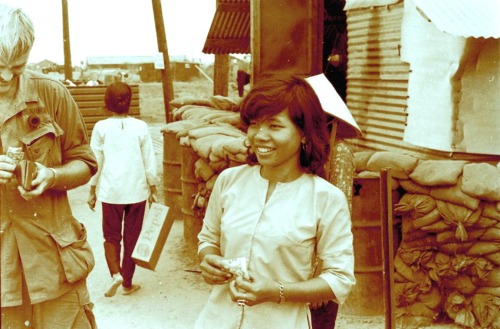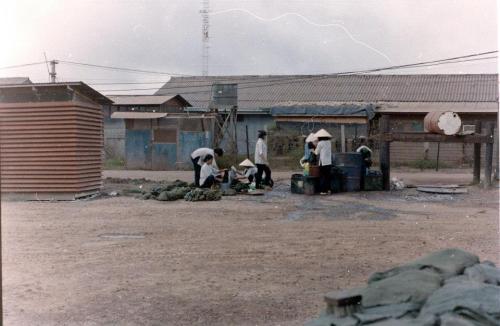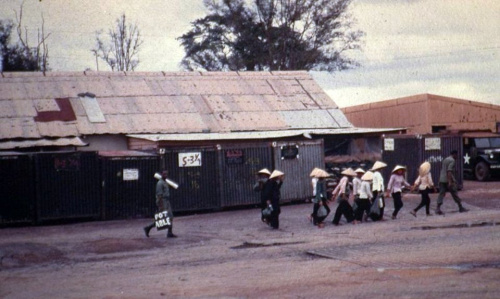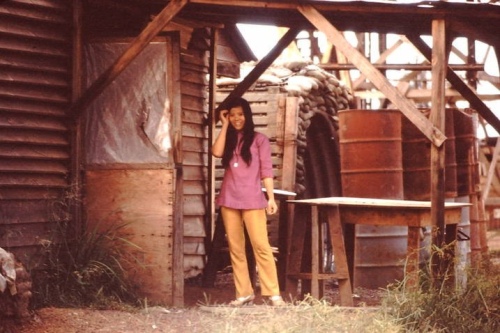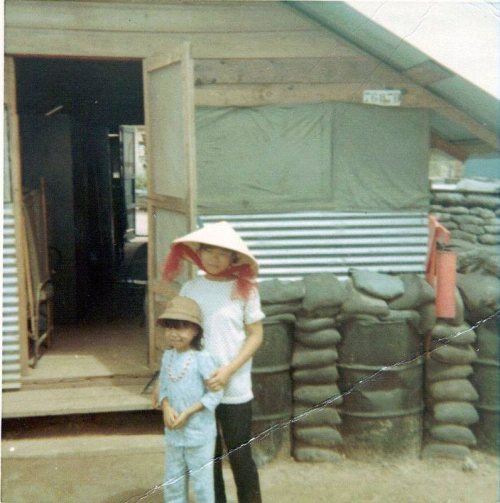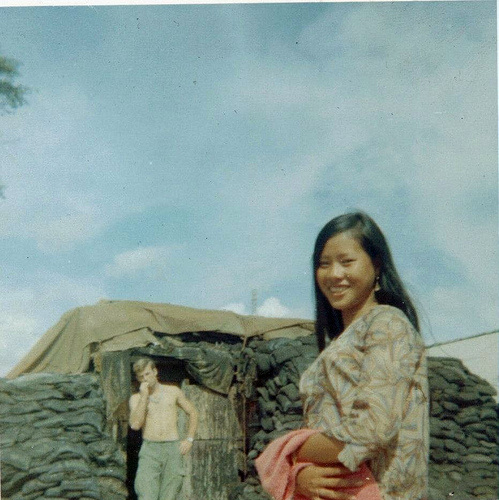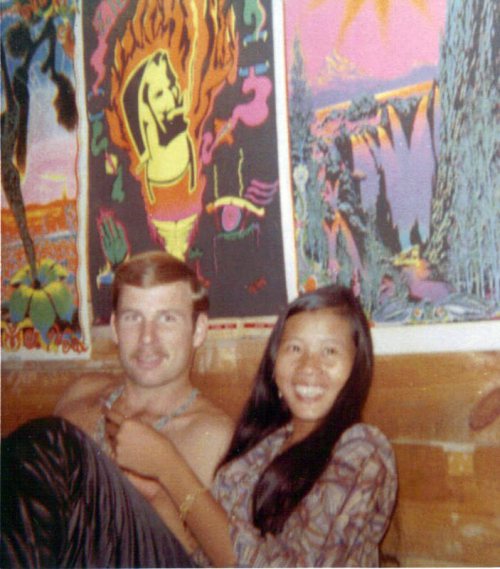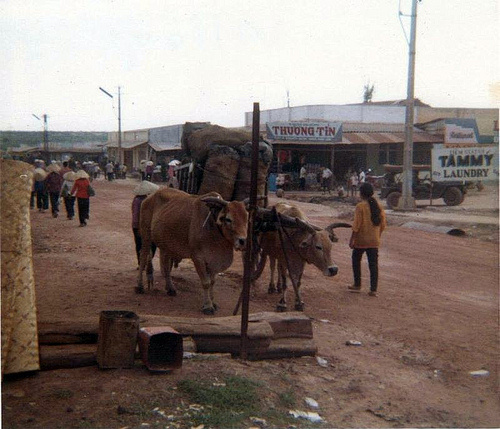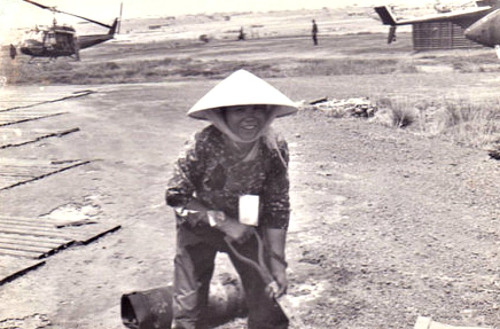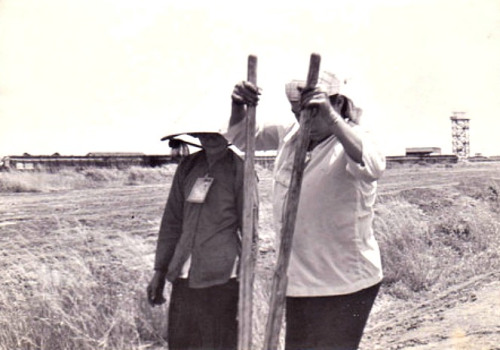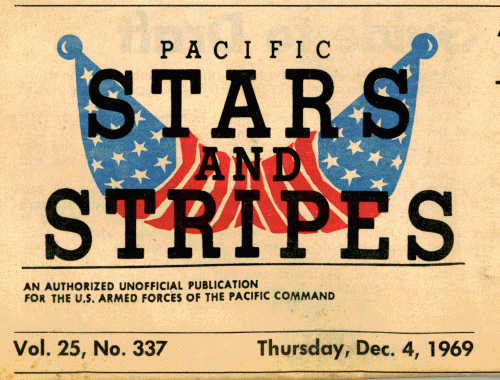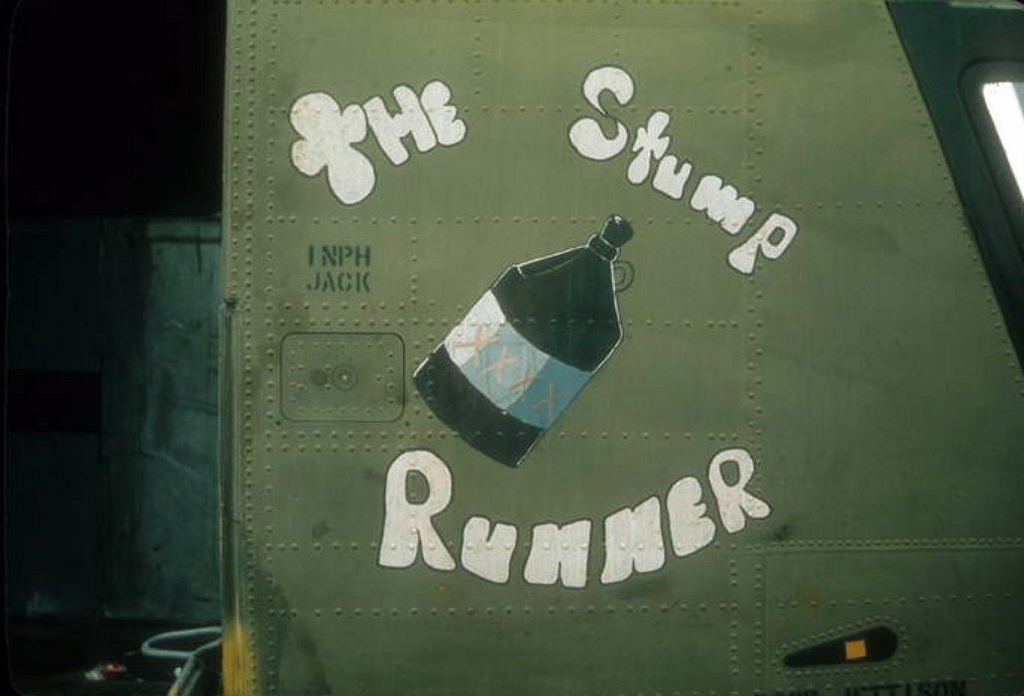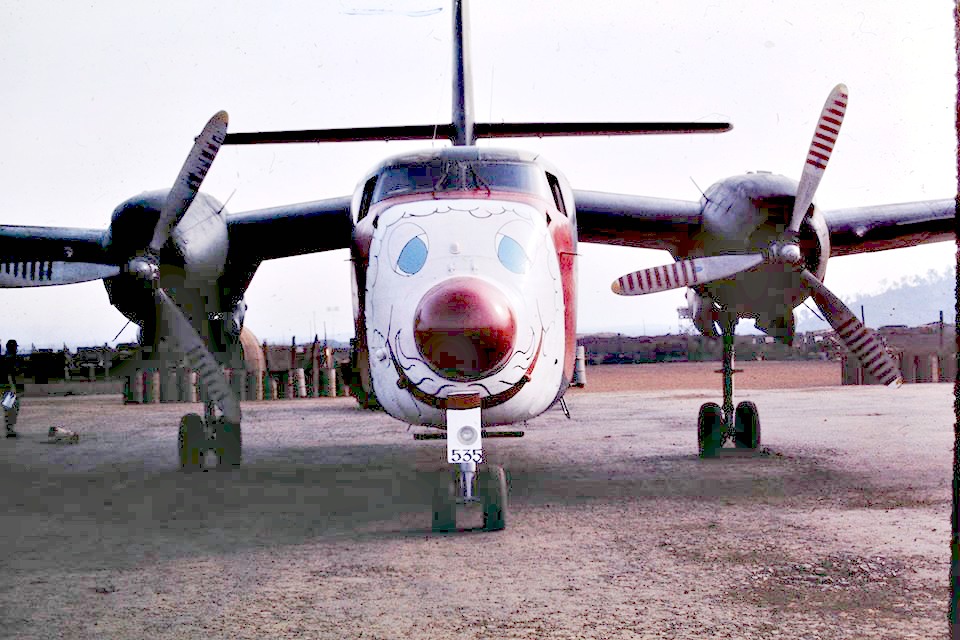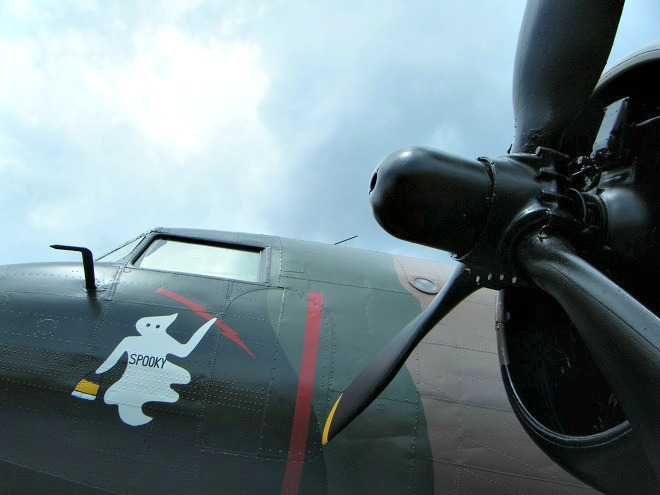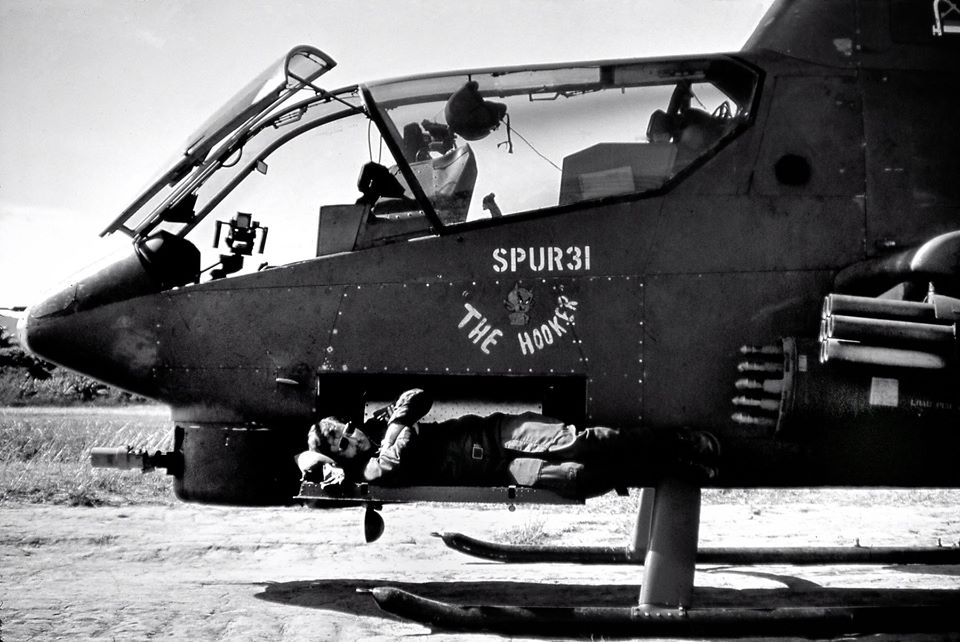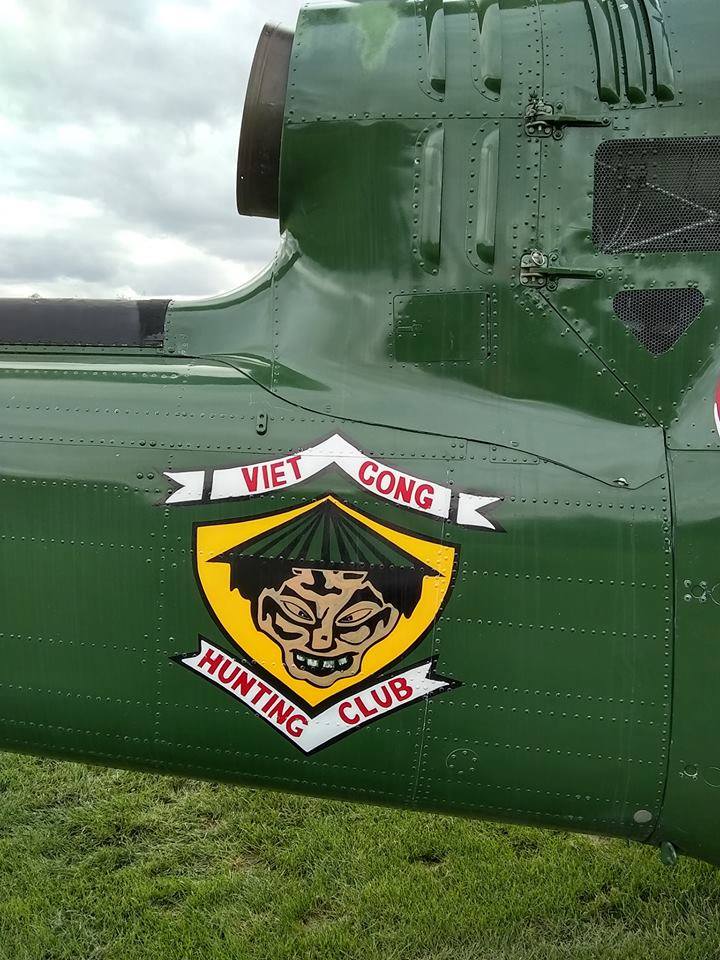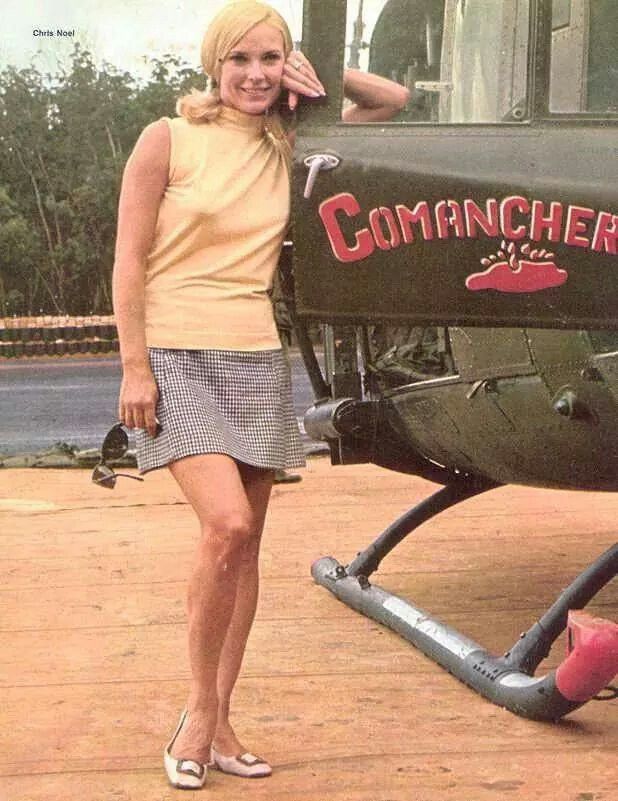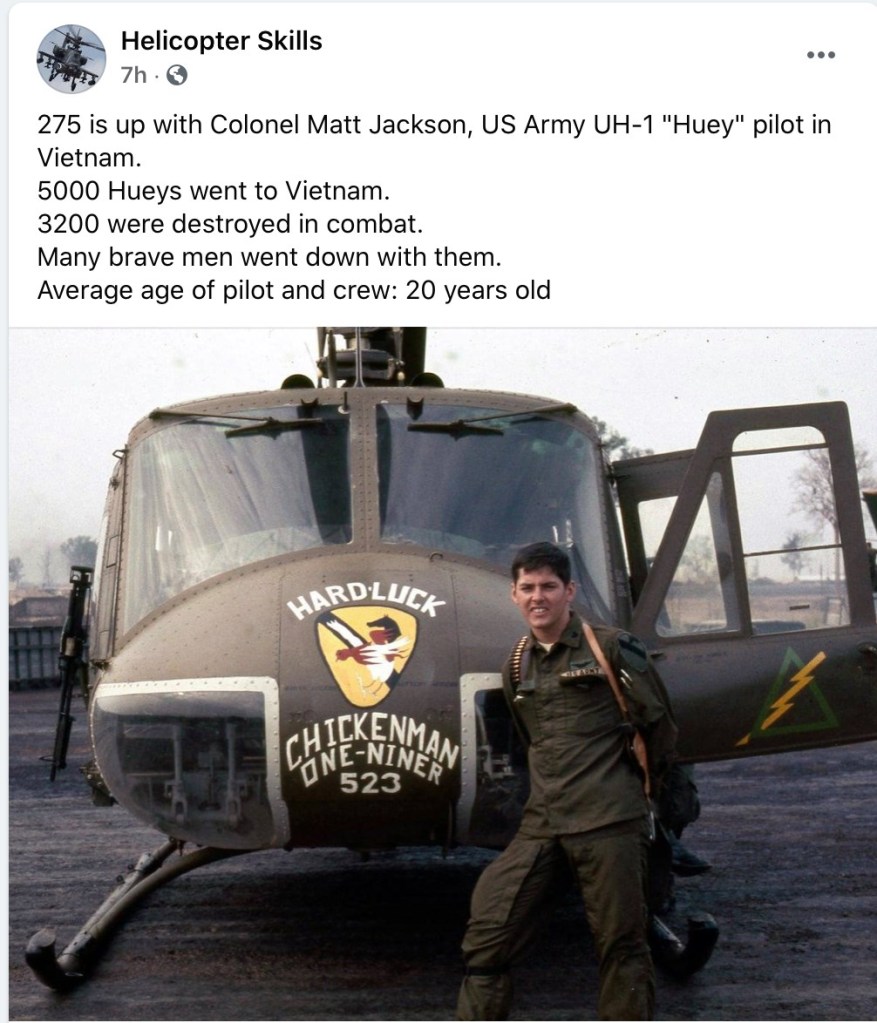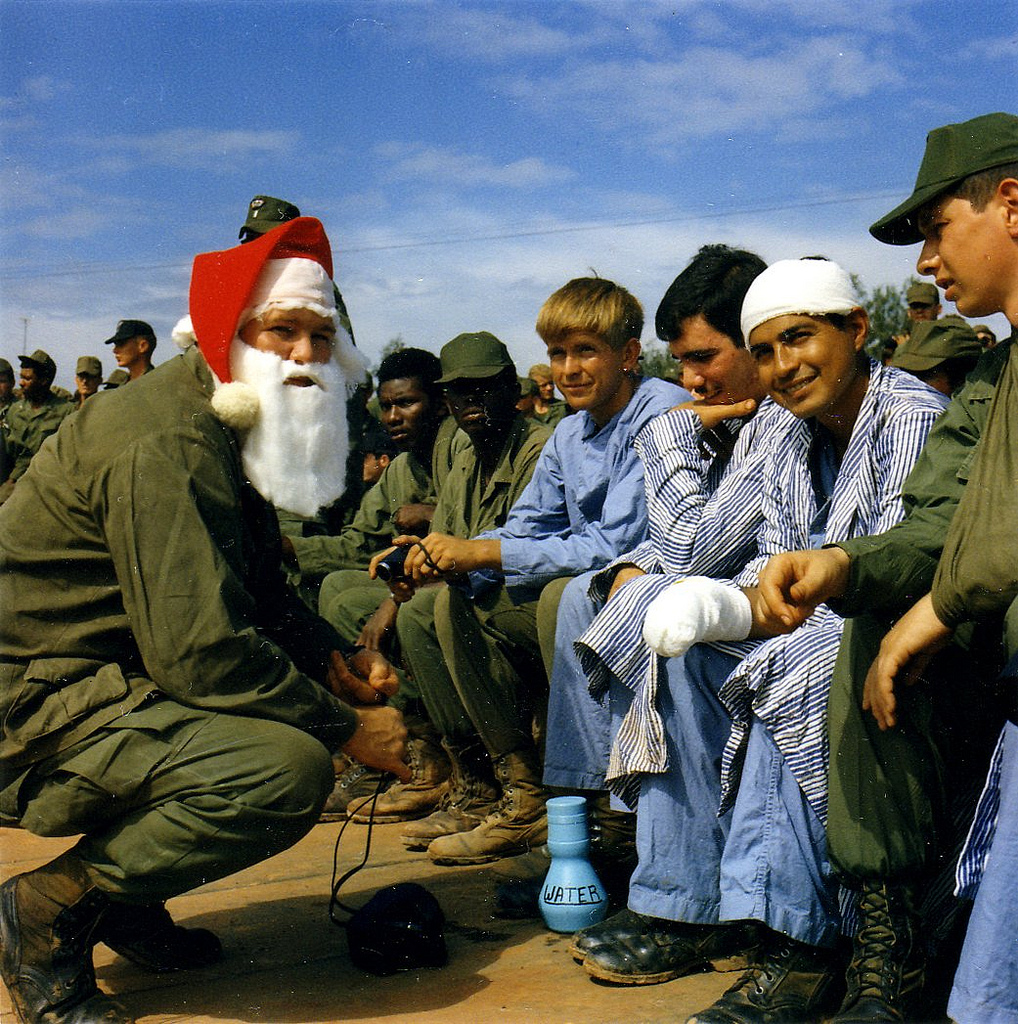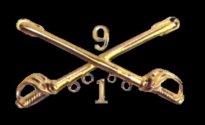The Way It Really Was
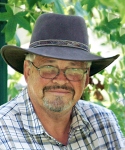 This post will hopefully, reveal the truth and the real Vietnam warriors. I guess that’s why our personal thoughts and feelings about what we did and who we are is important to tell anyone who’s interested in the truth. Warriors and their war stories come home to live daily mundane non-spectacular normal lives.
This post will hopefully, reveal the truth and the real Vietnam warriors. I guess that’s why our personal thoughts and feelings about what we did and who we are is important to tell anyone who’s interested in the truth. Warriors and their war stories come home to live daily mundane non-spectacular normal lives.
We are DIFFERENT than civilians, different than cops and firefighters, our Blues are different than other infantry. We have a unique aerial view of Vietnam, it’s people, its soldiers and homeland. Non-helicopter aviators normally never see the enemy – we saw the gleam in his eyes, the sweat on his forehead, the flash of his gunshot. Maybe he missed but the images remain, perhaps even haunting us as we see his bleeding body releasing his soul. It has affected us”
Forrest Frields
BY LARRY L. DONALDSON (Scouts and Lift Mike 35)
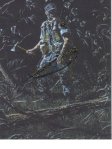 Dedicated to the aviators, infantry, armorers, maintenance, and clerks of Troop C, 1st Squadron, 9th Cavalry Regiment, 1st Cavalry Division (Air Mobile)
Dedicated to the aviators, infantry, armorers, maintenance, and clerks of Troop C, 1st Squadron, 9th Cavalry Regiment, 1st Cavalry Division (Air Mobile)
You may not like me or the things I write and say…….
But I would give my life for any of you on any given day.
Some of you walk with me at night in the shadows of my mind….
Where we serve once again, forever young, in a world we left
far behind.
We saw friends die. Some a horrible death but I’m told that is
war.
Together we mourned their loss. Remembered the cost.
Sometimes asking why and what for.
Hesitation was not a word when we had a downed bird or
L.R.R.P’s in contact…… we all flew.
Everyone of us willing to give our lives to save our guys.
Red, White, Lift, and Blue.
As we flew to Uncertain not knowing for sure what to expect.
Cautious but brave many a life we did save…. snatching
Them from the grip of Death.
We soldiered on the very next dawn….our duty it did call.
Flew over the jungle thick and green and yes more of us did fall.
We passed Mar’s test. We were the best! In my mind and eye
we still are.
Boy – soldier – men we were back then.
Yes we truly became Brothers In Arms.
CLOSURE
BY LARRY L. DONALDSON
The guys that I hung out with around here , SSG Rich Dressler/ 5th USSFG Airborne,MAC-V SOG, CCN, USA and one hell of a great harmonica player, MAG. David Dressler (Richard’s cousin), 5th USSFG (Abn) MAC-V-SOG,CCC, USA, SSG Greg Ogershock, 5th USSFG (Abn) USA,, SFC David Ogershock (Brother of Greg), 5th USSFG Abn) SGT Jerry Berkstresser, F Troop, 1/9th Cav,USA, SGT Tom Roy .2/7 Cav,USA, SGT Brad Kiel, 1/5 Cav,USA, SSG John Darrnell, 1/7th Cav,USA, MSG Dennis Eichelberger, 173 Abn Div.),USA, MAJ Toby Roberts. Force Recon 9th Marines,USMC, L/CPL Fred Monahan, 9th Marines,USMC, ( Navy Cross Recipient),USA, SP/4 John Harvey, 3rd ID (Europe), USA, PFC John Fitzwater, 45th ID, (Korea), USA, GM2/Class Ed MacIntosh, Riverine Force,USN, SGT Lee Miller, 4th ID,USA, SGT Dr, Struthers (VA), 25th ID,USA, SSG Leonard Plyer, USAF, PFC Steven Bailey, 2nd AD,USA, MSG Frank Watts, MAC-V,USA, and SGT Wayne Hall, Co K, 1st BN, 75th INF, 4th ID, USA………..
(DECEASED) SGT Cyrus Wells, 28th ID, (WW2), T/SGT Frank Smock, 8th USAAF WW2), CPL, Thomas Hice, 3rd MRgt,USMC, CPL Ralph Brown, FMF,USMC, SGM Clyde Adams, USA, (WW2, KW, RVN)
We all have/had closure if that’s what you want to call it. We all have/had the nightmares and memories that seem to go along with “Closure”. Only a few have attended any reunions and even less belong to any veteran clubs. Most of us have come together around here through music. Rich, Jerry, Brad, Steve,, Frank, Wayne, Cy, Frank, Tom, and myself are all accomplished musicians and met through our love of music and whatever instrument we play Music seemed to be the healer and closer that brought us into the post Viet-Nam era. But……after the last note is played we all seem to return to that time, whatever war we were personally involved in. and the weight of “closer” is once again felt. Validation? Our validation of whatever war we fought in does not include the political, right or wrong views, or the “big” picture. Our validation is “us” and “them”……….. meaning “we” fought for each other and ourselves and that applies to the “them” who went across that ocean alive and returned to our shores dead.
In our eyes there was not ever a war “worth” it. WW2 ended in total and complete victory but really never accomplished a damn thing because Germany and Japan are one again as nations, fascism and nazism are still alive and well, and every generation of young Americans march off to war still. Korea is back to where it was when that war started. Viet-Nam? The South Vietnamese evidently did not care that much for freedom and lost the war after we left.
“Worth it” to us is not the victory, the “cease-fire, or the loss of any war but the fact that complete strangers met on a battlefield far away, and fought for each other, let alone themselves, and came home, a little tattered, scarred from combat either of the flesh and bones or mentally. People have asked why we fought in those wars and our answer is “For the guy next to me”. Others say, “Thank you for fighting for our country.” and a lot of us either reply with, “Thank you.” and with all reality, especially the Korean and Viet-Nam vets, know we never fought for our country but ourselves, each other, and for freedom and to stop a oppressive and aggressive ideology that the “enemy” believed in wholeheartedly! Especially in Korea and Viet-Nam.
The effects and the questions we ask ourselves of that war has/had upon those of us involved in combat will always be a part of our lives until our last breath is let out and we cross over. No medicine or psychiatrist will ever remove or lessen that effect. It will always be there. Was what we did and experienced worth it and ever be validated by others and ourselves? For me the answer was yes when I held my children, grandchildren, and great grandchildren in my arms and watch them grow. Would “I” ever do it again? Yes. That is all the validation we will ever need. Was the war “wrong?” Yes……..and no. Whatever “war” is or was right’ That is a subject for historians to argue and answer and not us. We know the answer every time we read our, or a “Brother’s”, words or look upon those who were there beside us and stood with us in a terrible time in our young/quickly aged lives.
Am I proud of what I did then? Really? No. But the pride I feel for my unit (s) and those people I served with in those units is beyond belief and measurement. That is all the validation I will ever need.
Lift Mike 35
“Dear John” Letters
BY RONALD “RON” FERRIZZI
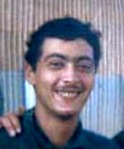 Ah Yes, The ‘Dear John Letter’. This is what comes to my mind. It was 20, November ’67 and I just arrived in the Nam 5 days before my 19th Birthday. By November 27th I was in AnKhe, then off to LZ Two Bitts to become a scout with Charlie Troop, a white team crew chief.
Ah Yes, The ‘Dear John Letter’. This is what comes to my mind. It was 20, November ’67 and I just arrived in the Nam 5 days before my 19th Birthday. By November 27th I was in AnKhe, then off to LZ Two Bitts to become a scout with Charlie Troop, a white team crew chief.
I’ll never forget, after the 1st day the initial shock started wearing off, & the 1st guys I saw were 2 Buck Sargents playing with a monkey. They greeted me with a ‘hey fng want to pet the monkey? of course, who would pass up a chance to pet a monkey; when the monk latched on to my leg they howled with laughter, then they showed the monk this big green mallet and he backed off real fast. They were Sgt Johns & Sgt Tillman. who lived in a hand built place called a ‘hooch’ right by the gp tent the rest of us lived in. Now these were Blue NCO old guys who saw lots of shit. As it was then, our platoon leader was Sgt. Jenkins, & he said there will be a place for me soon, stay out of trouble, then he went off on a mission.
That afternoon, only the pilot returned with a blood laden 13, called over to me & said, this ac is yours now son, once you clean the blood out of it, patch the bullet holes, and do an inspection. Now, good for me, for some reason Tillman & Johns were easy to get along with, they showed me the ins & outs of an M 60, they also showed me how gallows humor would helped keep us some what sane. By their example they showed me how to stay alive. they were in their hooch laughing, when I was rescued with Mr DaCosta from our swim in North Lake. Sgt Johns took the picture of me, all wet, right after the slick dropped us off, claiming, your not a cherry any more Ferrizzi. Those 2 guys were inseparable. So as it was,,we all did our jobs, moving up to Dong Ha, then on to Evans.
Whenever they went on a mission, I would say to them, if you don’t come back, I want your feather pillow! & they always wanted my wife’s address & phone number if I didn’t return! Sgt.Johns received his ‘Dear John’ letter from his wife in Fla right before Tillman left. They laughed a nervous laugh,saying good riddance. Johns was pissed, & he voiced it; oh the drama. I think it was the end of February that Sgt Tillman derosed, passing on to me his prized possession, his feather pillow.
Now, from Nov 67 to Nov 68 I was shot up, shot down, set on fire in mid air, flew thru an arc light, camped out in support of the rescue at KheSon, once with a 13 flying with Mr. Jones and once with a loach; I saw the moving trees that were trucks in the AwShaw valley, I flew our 13 back,with my pilot wounded, going in an out of conciseness, , and our center console and bubble completely shattered from gunfire. On March 14th while in the chase ac. I watched as a treeline spit fire at our lead ship with Lt Johnston & CE. John Harris on board, and they did the corkscrew dance to the deck not 50 ft right if front of the treeline. We blazed that treeline with everything we had. Mr Jones tossing wp, while I almost melted the barrel on my 60, till a rescue could be mounted by our blues. I saw John dragging the Lt. away from the wreckage when the red team showed up, wiping the lsa from my face,I was grinning hard from ear to ear, when those B Models started barking in unison with utmost authority. Rescue was around the corner and we went home.
The 15th of March 1968, was what you might call a game changer. Started off like most 1st light missions, do the perimeter an expand out, look for anything, then it was off to the Quang Tri ao, the foot hills, that’s where we found the rocket tubes, setup ready to go with loads of trails & lots of recant action, catching up we came under fire from the rear, spun that loach, and put 60 down where it counted. The o was on target with his 16 and we ran out of ammo real fast. We had to leave station for fuel & bullets and another team was assembled on the flight line ready to go. I flew with Lt Panamaroff with Sgt Johns as our o often but this mission Bob Smeal was in his back seat, with a big thumbs up to Bob, they took the leed & Mr Jones, not sure of our o that day, maybe a fellow named Gossage comes to mind, fell in high bird position. It wasn’t long before we were on station when they unexpectedly did a hard left bank, head on into the mt side, Mr Jones screams out,”They’re on fire” and we had to help. We couldn’t set down fast enough, I was unhooked & out the door, kind of running falling downhill, to the up wind side of the burning ac. for me, It’s real hard to get past this point of the story, even today, 45 f…n years latter, the loss of these fine men, my friends is a quite rage, I carry.
But I always wondered what really happened when Tillman found out because the scuttle butt was that he was a man on a mission, he went and scouted out Johns wife & went off on her about Johns being kia’ed & she had no clam on the 10k. because they were as good as divorced. This was all before she was notified by the dod. Tillman found out from Charlie Troop Blues before the family was notified. I heard about some small shit hitting the fan over that. That’s what comes to my mind when I think of a ‘Dear John Letter’.
Ronald Elmer Johns
Ssgt
KIA Mar. 15,1968
Panel 44E Line 059
Robert Smeal
SP4 CE
KIA March 15,1968
Panel 44E Line 062
Walter John Panamaroff
1LT Scout Pilot
KIA March 15, 1968
Panel 44E Line 061
It’s always the Old to Lead us to War & Always the Young to Fall! These men are my Brothers and They Will Never Be Forgotten!
Myron my Roommate
BY KURT F. SCHATZ
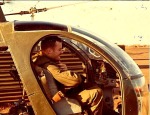 WO 1 Myron R. Lamont, Cobra pilot extraordinary and my roommate. Myron had just turned twenty years old and approached me about buying a hooch that was For Sale by some departing C Troopers. I had been living on a cot surrounded by rocket boxes filled with dirt with pieces of steel runway plates for a roof. It was so small you couldn’t even sit on the cot.
WO 1 Myron R. Lamont, Cobra pilot extraordinary and my roommate. Myron had just turned twenty years old and approached me about buying a hooch that was For Sale by some departing C Troopers. I had been living on a cot surrounded by rocket boxes filled with dirt with pieces of steel runway plates for a roof. It was so small you couldn’t even sit on the cot.
I didn’t even know Myron but we soon became best of friends after buying our new home. Can you imagine a Scout and Gun pilot living together; we were at it constantly, always trying to pull something on each other. Myron was a Mormon and a very naïve virgin; yes a virgin who didn’t drink or swear. This Scout had a lot of work to do before Myron would be christened into the brotherhood of the Cav.
Myron fought me every step of the way during his transition. He was constantly trying to get out of the Cav. On one occasion, in November of 1969 he was coming into one of the Cobra revetments at Phouc Vinh when the shit hit the fan. Myron had just shut the Cobra down and it was being disarmed to go into PE. The CE that was disarming it had stacked the rockets against the inside wall and was clearing the minigun when he shot a tracer. Of course, it went into one of the stacked rockets, igniting the motor. The rocket went up, armed itself, and fell straight down, setting off Armageddon right there on the C Troop flight line. The entire Fire Support Base came outside of their hooch’s, clubs and bunkers watching in amazement at the “rockets red glare of bombs bursting in air”. The sun had set well over an hour when the fire works display was initiated. There were at least fifty 17-pound rockets against the revetment walls along with cases and cases of 40mm and 7.62 rounds. The exploding rockets were the most fun to watch some even took off impacting at various points around the base. One even hit a hooch across the runway in the 227th’s area, no one got hurt. It took almost an hour before the Cobra had completely disappeared, only the tips of the rotor blades gave a clue of what was once a helicopter. It really wasn’t fair to blame Myron for that one
Good old Myron trying to get out of the Cav again, but what he didn’t know was that we had more Cobras than pilots. Sooooo the next week he decides to take some Infantry Lieutenant for a joy ride around the base. As they are hovering just beyond view Myron begins to instruct the Lieutenant on how to shoot the 40-mm directly under the Cobra. It took the sheet metal people the entire week to get all the holes repaired.
The next thing I know Myron goes out to provide cover for our Blues (Infantry folks) and gets a little off the mark and shoots up the Blues with the 20mm gatling gun and spent a week on the ground with them as punishment. None of the Blues had been hurt, just scared shitless. He didn’t make any friends on that one except the Troop Commander, I think Myron had become friends with him after the numerous visits.
Knowing that he needed some cheering up and knowing how depressed a guy can get when he can’t fly for an entire week I introduced him to my best friend, Jim Beam. Myron was very glad to meet him; Jim cheered him up almost immediately. I had a difficult time getting Jim to leave our hooch that night, so I gave up and went to bed.
The sun was even hardly up when our next door neighbors Hunter & Battel woke me up accusing me of putting Myron in their bunker and convincing Myron that it was the shitter. Poor Myron, Jim still had a firm grip on him, he had shit all over himself, if it wasn’t for Hunter an Battel holding him he would have had to crawl home and everyone knows that isn’t the Cav way. Myron just didn’t understand that shittin in another mans bunker will not get you out of the Cav in fact he was becoming one of the boys now that he understood Jim Beam. But most of all, only a Cav guy would sit on a wooden chair and go shit and fall asleep doing it.
Now that’s Real Cav!
Myron never did get out of the Cav but got out of the Army as soon after getting back to the States. He tried the Reserves as a fixed wing jock but didn’t like that either especially when the wheels of that brand new U21 didn’t come down. I thought those things had some sort of warning to tell you not to forget to put your wheels down.
HOW I REMEMBER KUYKENDAL
BY KURT F. SCHATZ
It was January of 1970, North of the mountain Nui Ba Ra, well beyond the artillery range of Fire Support Base Buttons at its base, but not beyond the imagination of the 1/9 Cav, C Troop. After all “they can’t get me” attitude was what got so many of us killed and God knows, I had it just as bad as anybody else.
To regress a little, I had just gotten out of Scouts and was new to Guns having just returned from my in country Cobra transition at Vung Tau. CW2 Hubert Kuykendall, Cavalier 28 was the Aircraft Commander (AC). He prided himself on being able to hit anything with the 17-pound rockets and being able to turn the air green with his gas, those Cobras had very bad ventilation. You know how sulfur smoke puts that taste in your mouth and nostrils? He could do it, makes my skin crawl even to this day and that’s why no one wanted to fly with him.Kuykendall was putting me through the ropes on how to become an AC and I was bound and determined to become one, some guys would spend an entire tour and never make it. We were sitting on the ground with our backs propped up against the revetment wall our Cobra was parked in. I don’t think we part of a team that day, just an over grossed Cobra at Buttons waiting on a mission. We were having a slow day so we challenged the Lift guys to a mini mortar war in the neighboring revetment. What you do is break open a 7.62 tracer bullet, pour some of the powder out, leaving just a touch on the side, aim it carefully, get your trusty Zippo out (the one with the 6 inch flame so you can light your smokes at 100 knots) and KABOOM. Off into the next revetment, watching as the bullet burns with that red glow that might result in a hit on one of your fellow Troopers. What fun!
Off in the distance one of the Operations guys signals us to come over. “Great” got to be a mission. Both of us hurry over to the tent covered in red dust. The Operations Officer points to the map, “This is a 51 cal anti aircraft position we want you to take out. It’s beyond the range of our artillery and it’s been giving the Air Force some trouble. The location is in a cave mid way down a 1000-foot deep valley. They just can’t get into it. Now go take it out!” We mark the map and without any thought or fear crank it up and head for the target.
The swab and debonair Kuykendall gets to altitude and on course and promptly passes gas. He keys his mike and says “Got one coming to you” as he laughs. I look into the mirror, he is hysterical, his red face twisted, with his orange mustache bouncing across his yellow teeth. “God Kuykendall” I scream over the intercom, “You a__hole… Jeez, I think I am going to puke.” At that he began to cry he was laughing so hard.
By the time the air had cleared we were coming up on the target at about 2,500 feet above the valley. We both confirmed the location, as Kuykendall pulled the nose way back gaining altitude and almost coming to a hover. He jams forward on the cyclic diving at an angle that looked like it was straight down. I began shooting the mini gun, which promptly jams and switched over to the 40mm chunker which promptly jams. Kuykendall began ripple firing the 17-pound rockets right on target, he was good. I came across the intercom in a calm voice, “Were taking some fire.” Kuykendall screams ” Shut the F__k up, I’m shooting.” As he pulls the Cobra out of the dive at well over 200 knots everything was shaking and the flex sight smashed into my legs to the point of hurting from the G’s, took all my strength to hold it. That dive scared me more than taking fire.
The Cobra is now at least 2000 feet going straight up, right peddle is pushed hard and a hammer head stall maneuver is executed flawlessly resulting in another high angle dive. Kuykendall comes across the intercom as more rockets are delivered on target “This is how you handle yourself when you don’t have another gun ship to cover your break, you got to learn how to do it or the Gooks will definitely get you.” Again I come across the intercom in a calm voice. “Were taking some fire.” I look hard at him in my little mirror his expression intent and not flinching from his concentration of the sight to his front. For some reason his eyes turn from the sight to see hundreds of Green and Red tracers enveloping the bird. He screams over the radio, “Taking Fire” like anyone is going to do something, we were all alone.
He continues the dive to tree top level and down the valley out of harms way. Then he begins to chew me out for not informing him of the hostile rounds. Well this old Scout don’t take no unfounded chewing out. I said, “Look Kuykendall I told you twice we were taking fire” and he responds, “Yea but you didn’t tell me it was that bad don’t you know the difference.” At that point I was getting pissed, “Look Kuykendall the only difference is that Scouts get shot at this way all the time, I just didn’t realize you gunnies didn’t.”
We went back to Buttons to rearm and re-fuel and tell the operations folks we were not going back out to that 51 cal. Most of all, to get back to the mini mortar war, the Lift guys were winning and you just can’t let that happen in GUNS.
Why did they send Cobras to known 51cal positions and why did we do it????
MEDIVAC STORY
BY KURT F. SCHATZ
 THERE I WAS, the little bird (OH6) and my high bird (an AH1G) in a typical Cavalry Pink Team configuration (Hunter-Killer team) trying to snoop out old Charlie. We had been scouting for about an hour just south of Fire Support Base Song Be, near the mountain of Nui Ba Ra (about 100 miles north of Saigon). It had been a quiet day until we got a call for help from a Medivac! They were attempting to rescue a grunt and couldn’t get into the Landing Zone (LZ). The Infantry unit had cut the LZ with machetes out of the bamboo forest. Medivac attempts to land were met with light ground fire and a LZ they couldn’t fit into.
THERE I WAS, the little bird (OH6) and my high bird (an AH1G) in a typical Cavalry Pink Team configuration (Hunter-Killer team) trying to snoop out old Charlie. We had been scouting for about an hour just south of Fire Support Base Song Be, near the mountain of Nui Ba Ra (about 100 miles north of Saigon). It had been a quiet day until we got a call for help from a Medivac! They were attempting to rescue a grunt and couldn’t get into the Landing Zone (LZ). The Infantry unit had cut the LZ with machetes out of the bamboo forest. Medivac attempts to land were met with light ground fire and a LZ they couldn’t fit into.
The ground unit was in a panic, the medivac was getting frustrated and the wounded man needed some professional medical help, he had fragments of willie pete (white phosphorus) imbedded in his skin and was burnt badly. In military terms “things were going to shit in a hand basket”. Our Pink Team made it to the site and my high bird made the initial contact with the ground unit. Not knowing where the enemy was the Cobra began reconnaissance with fire, 17 lb. rockets and 40mm (chunker) allowing me to move in without taking fire in my LOH (or “Loach”). I began a hasty approach into the LZ and it was small. As I began my descent from what looked like 50 feet above the bamboo, the tips of my rotor blades began to eat away at the narrow hole. Bamboo was flying all over the place. My skids finally settled on top of the pile of bamboo that the grunts had hastily cut down and it was totally unstable, the pile must have been 3 feet thick. I held it at a hover and two guys brought the injured man over in their arms placing him in the back of the helicopter. My Crew chief held him while I began my take off eating my way back out of the bamboo.
Cruising at altitude and headed back to the FSB, Phouc Vinh dispensary (home of C Troop, 1/9 Cav) the crew chief calls over the intercom that some of the willie pete is starting to smoke. Well its “balls to the wall” time. I got a little panicked but Phouc Vinh was just ahead and I radioed the tower that I had an emergency and needed direct clearance to the medivac pad. “Permission granted” and the next thing I know I am over the pad and a bunch of guys were playing basketball on it. Man was I pissed waiting for those guys to move off the pad. After what seemed like an eternity some guys finally came out with a stretcher and got the wounded man out. I have no idea who he was or what happened to him.
Recon 1/9th Cav Style
BY TOM CRISER ‘CAVALIER BLUE INDIA’ 1969-70
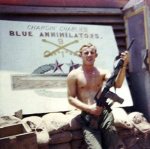 It didn’t seem like it was real! It was more like it was part of a movie or something I read in a book. Maybe it was because I grew up two blocks from some Hollywood studios. Or maybe it was because my first job in high school was working around movie stars. But my entire Vietnam experience never seemed like it was for real.
It didn’t seem like it was real! It was more like it was part of a movie or something I read in a book. Maybe it was because I grew up two blocks from some Hollywood studios. Or maybe it was because my first job in high school was working around movie stars. But my entire Vietnam experience never seemed like it was for real.
My first job was doing deliveries for an interior-decorating store called the Staircase. It was partially owned by the wife of George Axelrod, the writer and producer, who was responsible for the movies Up the Down Staircase, (henceforth the name) and How to Murder your Wife. I did get to meet people like Natalie Wood, Jack Lemon, Angie Dickerson, and on and on. So, like many who live in that kind of “tinsel-town” environment, I had a surreal outlook.
When I received my draft notice in April 1968, I never doubted that I was heading for Vietnam. I stepped off the plane in Saigon on February 13, 1969, and smelled the humid air that seemed filled with a sent of gunpowder, military machinery, and an unknown stench that I learned to hate. Some said it was the smell from the human fertilizer the Vietnamese were rumored to be using. Others said it was the smell of ‘Crispy Critters’, a term I had never heard before. Even with all that, I still didn’t feel this really was happening.
The first assignment Freeman ‘Duffy’ Daugherty and I received was two weeks of KP in an officer’s mess in Saigon. Duffy and I had been together since basic training at Fort Ord, California and managed to stay together through A.I.T. and special weapons training at Hunter Ligget, Calif. He and I would hang together when off base. Naturally, as young men, the only thing we had on our minds was to meet some nice local girls.
We both had orders to leave for Nam on the same flight from Oakland to Saigon. The Major who was in charge of the flight, which had layovers in Seattle and Tokyo, was apparently very upset at us for accidentally delaying the take-off in Seattle. Duffy and I had met some Stewardesses, as they were called then, during the three-hour layover and missed last call to board the plane. The plane was at the end of the taxiway before they got the word that we were not aboard and had to turn back to pick us up. Truthfully, the only thing that saved us from being considered AWOL was that the airport was under construction and two others also didn’t hear the call for our flight. When we heard that we got KP, we smiled thinking that it beat being in the jungle.
The two weeks on KP went too fast. The duty was really not bad, except for having to be up at 4:00 a.m. each morning. Beside, by ten o’clock we were higher than a kite. Apparently, unbeknownst to us, the Vietnamese pot scrubbers who worked in the kitchen always took brakes and smoked Hashish. Duffy and I got high just from the fumes. Additionally, we usually were done with our job by noon and spent the rest of the day in the NCO Club drinking beer.
Unfortunately, we didn’t get to keep the fun KP job and both were soon off to the jungle. My poor friend Duffy got the worst deal. He ended up with a hard core ‘bush unit’ that stayed out in the jungle for three to six months at the time. He was wounded three times and came home having served with great honor.
I, on the other hand, landed with the Blue platoon, Charlie Troop, 1/9th Cavalry, which was the core of the 1st Air Cavalry. We lived in hootches, with hootch maids to keep them clean, had weekly free laundry, and got to watch movies on weekends. A real sham assignment, or so I was told by a chopper pilot just returning from R & R.
The reality was that the 1st Air Cav was assigned to stop the North Vietnamese and Viet Cong from penetrating and attacking Ben Hoa, 30 miles north of Saigon, and Saigon itself. The 1/9th was based in Phuoc Vinh, 30 miles west of Ben Hoa, and as I very quickly found out, the ‘Blue Annihilators’ were the rescue and reconnaissance arm of the Cav. Our two functions meant that we were in choppers every day looking for the enemy or going out after downed-birds (crashed choppers or airplanes). We were the ones first on the ground of a crash and responsible for putting the mostly burned bodies into bodybags, or with the kind of sick humor that war brings, as some called it bagging ‘Crispy Critters’.
It took 12 years, after coming back on April 1, 1970, to start talking about being a Vietnam Veteran. The first thing I wrote about being there was a poem called Vietnam Remembered and I would like to share with you.
I can’t remember most of the names and all the faces are a darkened blur.
I can’t remember all the strange places, but the smell of death is forever there.
(After more than ten years of trying to forget that I was there, it was hard to remember those whom I worked with daily, and the names of the places were just bizarre.)
I can’t remember the empty laughter or the jokes we told to ease our minds.
I can’t remember why we were all there, but the fear takes me clearly back at times.
(The demonstrations on the home-front were having their effect on those who were in Nam and even though we tried to keep our spirits up with jokes and humor, we were in the middle of a war zone. After coming back, sleepless nights made reality set in about being there.)
I can’t remember the Sunday I turned 22, but I think I killed a shadowy enemy that day.
I can’t remember why I shouted “he’s still alive” when my friends last breath past away.
(We were walking down a trail where our scout helicopters had seen enemy movement earlier. We were sent in to see what we could find. We found a firefight. Several days later we were on another trail and shots rang out. Spec 4 Roger Carroll caught a bullet in the back of his head, I called for our medic not knowing it was his last breath I heard.)
I can’t remember the hootchmaids name who read in our cards who was to die.
I can’t remember why we nervously laughed, but my nightmares know she didn’t lie.
(Staff Sgt Richard A. Dornellas only had two months left when she said he would die in Nam. He did go home and we all sighed knowing that her cards were bunk. Dornellas returned to Nam several months later and while serving with another unit, was killed in a tank.)
I can’t remember the FNG who took my place while my R & R took me on an Australian high.
I can’t remember the number of tears I spent when I heard it was he who took my place to die.
( Spc 4 Daniel Wright, a Funny New Guy (FNG), took my place as platoon RTO for the week I was on Rest and Recuperation in Australia. He was killed while helping to rescue some LRRP’s who where in a heavy firefight.)
I can remember yesterday my son asking me, while dressed in green with his toy gun.
I can remember the gleam of excitement in his eyes when he asked,
“Dad, was getting those medals in Vietnam fun?”
(Kids always end up finding things that are put away in the attic. My son was about five and was playing war with his friends. He found the medals I had received.)
Now, thirty-some years later, there is the reality that I was in Vietnam. The reality, though, is being shared with many of those who served in Old Charlie Troop 1/9th. Now, we have again found each other on the Internet (http://cavalier44.tripod.com ) and are sharing stories and memories. We are honoring those who didn’t come back.
Sometimes I’m asked about how I feel about having served in Vietnam. It took me until just a few years ago to realize that those who fought and died there didn’t do so in vane. It took a long time to realize that Vietnam served a very important part in our history. This country is forged on “Freedom of Speech”. Vietnam tested our rights to that freedom and I believe because of that we have become a stronger nation. We survived that test. We are stronger now than ever before in the belief that it is our right to disagree. We, as a people, are stronger. We know we can disagree and still survive as the best nation in the world. For me, it’s taken awhile for reality to set in; the reality that I’m proud to be a Vietnam Veteran.
The 1/9th Cav Regiment was the Eyes and Ears of the 1st Cav Division in South Vietnam. We were Scouts. There were 3 air troops and 1 ground troop + HHQ Co. in the Regiment. Each air troop was in fact a mini army unto itself; each troop had an infantry platoon (named ‘Blue’); a UH-1H helicopter platoon capable of ‘air lifting” the Blues into the field; an air Weapons platoon of UH-1C gunships (named “Red”) capable of attacking the enemy and/protecting the Blues at deployment. The last segment of the troop is the one I belonged to and will write about in this story: There was a platoon of Aero Scouts flying (at different times) OH-13, OH-6A and Oh-58 Light Observation Helicopters. All are affectionately referred to as LOH – “Loaches.” The Scouts were named “White.” We had our own Maintenance platoon to keep our birds flying.
In early February 1968 the fabled TET Offensive was in full sway. “Charlie,” pushed to the forefront by the NVA, struck all over RVN including invading the heretofore sacrosanct Imperial City of Hue.
We kicked their ass on the battlefield; we won the battle but they went on to win the war.
Thousand Oaks, California – about 1990
BY FORREST FRIELDS
I hadn’t known Tom Criser as he served in C/1/9 after I left the unit in November 1968. Tom was the radio man (RTO) for the infantry platoon that was part of the unit. While they often (and loudly) proclaimed they were an Airmobile Shit Detail their real assignment was to be inserted into the jungle first whenever we had a helicopter shot down (too often!) or wherever a super elite small squad of “Trail Watchers” called Long Range Reconnaissance Patrol (LRRPs) needed an immediate extraction because they had been discovered by the enemy.
Tom had found his niche in Thousand Oaks, Ventura County, California with the newspaper The News Chronicle. I had arrived in Thousand Oaks guided by an unseen destiny guide and the US Army in 1972 following my discharge from the Army. We had mutual friends who were in the local Kiwanis Club. Tom had already moved on to Corpus Christi, Texas at the time just prior to his retirement. Irish John Gore recognized my Vietnam unit, C/1/9, as Tom’s also. He is the person who orchestrated our first meeting one evening in thousand Oaks when Tom was back on personal business.
It was as if we were back in Vietnam again without the humidity and heat endemic to Vietnam. The dimly lit bar became our “hootch” and we were young men eager to talk about our military service to someone who had been there. We talked and exaggerated our impact in that ancient war, Tom as one of our enlisted BLUES and me as a Scout pilot and officer.
I don’t recall the two of us ever meeting again face to face. I think we talked through the “gossip line” of Irish John keeping each other appraised of current events and situations. Thanks to email and Facebook we have a more frequent and dependable (sometime) way of communicating today. In his retirement Tom became a published author, The Ghost in the Orange Closet detailing his service in the First of the Ninth and its aftermath. He sent me a copy. I didn’t read it all the way through – I don’t remember why. Maybe it brought forth too many memories, too many forgotten names, too many faces, some of which never returned home. Maybe it recalled too many things that I had safely stored away in some distant recess of my mind. I don’t know. I passed the book to another Vietnam vet, a friend, who needed it more than I did.
Nevertheless, we are friends separated by miles and times from one another. We are forever bonded together by war; we are comrades in arms, proud comrades, both wounded in unseen ways by our mutual service in that old conflict. We both have benefited from our military experiences.
We grew up in the same neighborhood – Vietnam.
Above the A Shau
BY FORREST FRIELDS
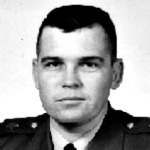 My first mission as a Scout, flying an old OH-13 out of Dong Ha near Khe Sanh, was to join up with one of our gunships to check out an area near the Laotian border. I was “White”; the gunship was “Red” together we were a “Pink Team.” I flew low and slow as the gunship covered me high and behind. The Red ship navigated from his high perch and the White ship poked and scratched around in the jungle treetops looking for sign of the enemy. It was an uneventful flight that suddenly turned lethal as such scouting missions often did.
My first mission as a Scout, flying an old OH-13 out of Dong Ha near Khe Sanh, was to join up with one of our gunships to check out an area near the Laotian border. I was “White”; the gunship was “Red” together we were a “Pink Team.” I flew low and slow as the gunship covered me high and behind. The Red ship navigated from his high perch and the White ship poked and scratched around in the jungle treetops looking for sign of the enemy. It was an uneventful flight that suddenly turned lethal as such scouting missions often did.
I found a road; a one-lane rutted road heading southwest. It was littered with paper wrappers, empty food cans and other trash. Instantly the gunship and I were on the alert. I dropped lower over the roadway and slowed my airspeed to better see the details; my observer strained against his shoulder harness as he leaned far out of the helicopter to pick up the smallest sign. The gunship was prepared to launch 2.75 rockets, mini-gun and door guns against the enemy who most often tried to hide (until discovered) rather than shoot first.
A small wooden bridge over a ravine came into view as the road curved into a small valley with a low hilltop in the center of it. Trees were ahead to my left; to my right, elephant grass filled the valley floor all around. Everything was quiet.
At this point I was very low and very slow; about 10′ off the ground and 30-40′ from the road at 40 knots. Another curve in the road around a grove of low trees brought a spectacular sight into view – a NVA motor pool! The site was neatly laid out with split rail fencing and hard packed earth ground. Chicom trucks were nicely lined up ready for action; a small thatched roof structure with an unreadable sign over the door must have been the dispatcher’s office. I was thunder struck! I had never seen anything like it!
I immediately took evasive action, turning violently away from the scene, speeding into the elephant grass as I climbed to stay above it. “Trucks!” I shouted into my radio to the gunship who had dropped lower once we entered the small valley; “Trucks! Lots of trucks!” I yelled! “I’ll get a grid. Put some 275 on ‘em” I said, as my “Oscar” feverishly tried to get us located on our map.
A moment later the elephant grass came alive with small arms automatic weapons fire – it was everywhere!
I dropped down into the grass and threw the nose forward as I pulled maximum pitch to get my fastest speed. The ground fire never slowed! “I’m taking fire!” I screamed into the radio to the gunship. “I’m coming” replied the Red ship – then – “I’m taking fire too!”
We were both down on the deck, in the grass, heading at max airspeed toward the low hilltop in the middle of the valley, the gunship fast behind me. Both of us had our door gunners firing blindly into the grass in a vain attempt to stop the ground fire – it didn’t work! Once they knew they were discovered they were intent on downing the two American helicopters.
As we rounded the hill, the firing stopped as suddenly as it started. “What the shit was that?” I squeaked into the mouthpiece, still traveling at full speed, about 100 knots on the deck. That was all I had time for before the shooting started again! The grass was alive with rifle fire! My rotor blade was cutting grass in front of my little bubble cockpit; bits of grass, shrapnel, enemy lead, our shell casings and whatever else had been loose in the cockpit seemed to fill the air – there was debris all over! My Oscar was wildly and continuously wiping the ’60 all over the grass trying to get the enemy’s heads down.
We continued forward; to try to climb up the valley walls out of range would have been sheer suicide for we would have come under fire from the entire valley floor simultaneously as we gained altitude. The normally faster gunship vainly tried to out run us in getting out of the valley! No way! I swear I was punching a hole in the roof of the cockpit bubble with the collective as I pushed the cyclic through the front of the bubble!
Then it stopped.
Both ships climbed for altitude as we continued out of the valley. “Did you get those trucks?” I asked of the lagging-behind gunship. “No” he replied. “We only put some door gun on them.”
“Shit!” I exclaimed. “We can go back” he said half-heartedly. There followed some brief conversation punctuated with a few surprising expletives before we turned around for another past at those f**king trucks. As we crossed that little bridge, this time at about 1000′, I saw smoke begin to pour out of the muzzles of the gunship’s door guns as the gunners returned renewed ground fire from below.
Just as if it had been choreographed for “Dancing with the Stars” both ships wheeled around in unison and we headed for the mountains. Enough is enough!
Back at our Operations tent we discovered we had been on the Laotian border immediately northwest of the A Shau Valley in a smaller, feeder stockpile of enemy transportation and supplies. Command called in airstrikes on our discovery.
My Last Flight
BY FORREST FRIELDS
Inspired and embolden by Larry Donaldson’s recent heartfelt poem, I penned one myself – based on his intent, meaning and sincere thoughts.
My last flight (just before Halloween, I think) in 1968, I flew Peter Pilot in an H model on an emergency extraction of a LRRP team trapped and under heavy small arms fire located in a large bomb crater surrounded by 300′ jungle on three sides on the side of a mountain. I’ll reserve the still vivid details of that successful mission/adventure for another time. That flight is part of my inspiration – along with Crazy Larry’s fine poem. Here is my poem:
You may not like us or the things we ‘oft say
But we would give up life on any fateful day.
Most of us walk in murky shadows of mind,
We are serving still, young, in a land far behind.
We saw friends die a horrible death suffered and killed in that war.
Together we mourn their loss for that and what for?
Delay was left when we had a downed bird or L.R.R.P’s for extraction
All of us willing to save by bold and fast action.
As we flew at full throttle, not knowing what to expect,
Snatching our comrades from the cold grip of Death.
We were cautious, yet determined and above all – just brave
Knowing full well the lives we would save.
.
We soldiered each day…our lives, our duty to call.
Over canopy verdant green, some more yet to fall.
We passed the exam, we passed Life’s test.
We were and remain Troopers! The best of the best!
In minds and eyes Winning Warriors we are,
Boys, soldiers, men who carry the weight and the scar
Of battle and honor and all of their harms
Brothers forever – Brothers in Arms.
War Stories
BY FORREST FRIELDS
War stories and PTSD tales are about releasing the demon energy residing within you. In my case and those cases of friends and co-patients of mine – that energy will never go away – at least not completely. Our only salvation is found in capturing it; in encapsulating it in a locked compartment in the recesses of our minds; that darkness keeps it at bay even if only temporarily.
And when it peeks out, when it sneaks out for a breath of clean bright air – it manifests itself in different ways with different people. With me its sadness, with sorrow. Still today.
I didn’t see atrocities and pain. My experience with fear arrived after my experience with reality. We were young, we were soldiers, some of us died…but most didn’t. At the time fear was masked by the elation, in my case on my first tour in RVN, by FLYING; flying a small helicopter in battle. Alone at the controls with a trusted sidekick beside me – with his trusty sidekick – an M60 machine gun with 1000 rounds of ammo.
I soared about the jungle of the mountains and the sands of the coastal plain; not high, unseeing above, just above the tree tops. Seeking, searching for signs of the enemy; finding it; dealing with it. We usually retuned to base camp victorious; sometimes only bored without reports of enemy activity – he had succeeded in hiding from my prying eyes. More often with a body count of enemies sighted, often – killed.
Nothing compares with combat – unless you lose. The chatter of the ’60 and the multiple radios; the smell and staccato sound of your machinegun. You toss hand grenades; they explode next to the target. Maybe you’re on a BDA – bomb damage assessment – mission. The jungle is thrown around like a child’s playground littered with fragments of former life, now tree stumps, vegetation debris and holes – bomb craters huge gaping mouths of destruction. Maybe a stumbling NVA regular, dragging his AK-47, staggering under the blast of sound and the impact of concussion in his previously hidden jungle world. He’s already dead, he just doesn’t know it. My M60 tells him.
I know killing is not right. I did it anyway. The price for bending life’s rules is remembering it. Memories of death, dismemberment,
War stories and PTSD tales are about releasing the demon energy residing within you. In my case and those cases of friends and co-patients of mine – that energy will never go away – at least not completely. Our only salvation is found in capturing it; in encapsulating it in a locked compartment in the recesses of our minds; that darkness keeps it at bay even if only temporarily.
And when it peeks out, when it sneaks out for a breath of clean bright air – it manifests itself in different ways with different people. With me its sadness, with sorrow. Still today.
I didn’t see atrocities and pain. My experience with fear arrived after my experience with reality. We were young, we were soldiers, some of us died…but most didn’t. At the time fear was masked by the elation, in my case on my first tour in RVN, by FLYING; flying a small helicopter in battle. Alone at the controls with a trusted sidekick beside me – with his trusty sidekick – an M60 machine gun with 1000 rounds of ammo.
I soared about the jungle of the mountains and the sands of the coastal plain; not high, unseeing above, just above the tree tops. Seeking, searching for signs of the enemy; finding it; dealing with it. We usually retuned to base camp victorious; sometimes only bored without reports of enemy activity – he had succeeded in hiding from my prying eyes. More often with a body count of enemies sighted, often – killed.
Nothing compares with combat – unless you lose. The chatter of the ’60 and the multiple radios; the smell and staccato sound of your machinegun. You toss hand grenades; they explode next to the target. Maybe you’re on a BDA – bomb damage assessment – mission. The jungle is thrown around like a child’s playground littered with fragments of former life, now tree stumps, vegetation debris and holes – bomb craters huge gaping mouths of destruction. Maybe a stumbling NVA regular dragging his AK-47, staggering under the blast of sound and the impact of concussion in his hidden jungle world. He’s already dead, he just doesn’t know it. My M60 tells him.
I know killing is not right. I did it anyway. The price for bending life’s rules is remembering it. Memories of death, dismemberment, inflicted pain and suffering; destruction of “stuff” remain long after the act. The danger, the fear, the excitement of battle – all gone. No glory here only pride in winning; pride in avoiding the hundreds of ways of death-dealing wounds. I hated “the enemy” – not his person only his intent in killing me and mine. I remember his face; I saw his grimace, the fear in his eyes, the smoke pouring from his sub-machine gun as he unsuccessfully sought to escape his pending death.
I remember all this shit! Not everyday, not all the time. I’m not debilitated by it. I don’t run from it. I tear up and sometimes cry about those days. Sometimes I write about those days, like now. I tell my story to my friends and family but really I’m telling them to me. The tales don’t make the telling easier nor do they make the memories less but they do release – if only for the time of the telling – some of that suppressed energy. Thank God, if He wills it – for my sense of humor. It has saved me countless times. I trust it will continue to do so.
inflicted pain and suffering; destruction of “stuff” remain long after the act. The danger, the fear, the excitement of battle – all gone. No glory here only pride in winning; pride in avoiding the hundreds of ways of death-dealing wounds. I hated “the enemy” – not his person only his intent in killing me and mine. I remember his face; I saw his grimace, the fear in his eyes, the smoke pouring from his sub-machine gun as he unsuccessfully sought to escape his pending death.
I remember all this shit! Not everyday, not all the time. I’m not debilitated by it. I don’t run from it. I tear up and sometimes cry about those days. Sometimes I write about those days, like now. I tell my story to my friends and family but really I’m telling them to me. The tales don’t make the telling easier nor do they make the memories less but they do release – if only for the time of the telling – some of that suppressed energy. Thank God, if He wills it – for my sense of humor. It has saved me countless times. I trust it will continue to do so.
Forrest
Dancing the Foxtrot
BY WALKER A. JONES
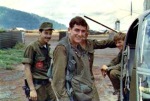 There I was, an experienced Scout pilot by the summer of ‘70. I’d arrived in late April, drafted, naïve and immature. Other boys with peach fuzz, teenagers-on-typewriters, had sent me to the 1st Squadron, 9th Cavalry Regiment in Phouc Vinh. Charlie Troop. I wrote the folks of the luck I had, not having to fly the Hueys we’d watched shot down on TV, but rather a small observation chopper that “only needed one door gunner”. I was to just observe the war. I have the letter. What luck thereafter, to have survived all that war-watching. I was still an FNG back in early May, riding left seat with Frazier as we raced from Cambodia to discover Whiddon’s burning little one door gunner helicopter, adding to the continuing fiasco. After days like those, the hot Vietnam evenings were spent in the O-Club, or in a dim hootch-corner, relieving the stress with your own click of guys, witnessing the stories of the day and those before my time, mostly boasts. We were survivors, hiding the fear with bravado. Strung together, those nights could become a diary of the daily trudge of our uncommon young experiences then.
There I was, an experienced Scout pilot by the summer of ‘70. I’d arrived in late April, drafted, naïve and immature. Other boys with peach fuzz, teenagers-on-typewriters, had sent me to the 1st Squadron, 9th Cavalry Regiment in Phouc Vinh. Charlie Troop. I wrote the folks of the luck I had, not having to fly the Hueys we’d watched shot down on TV, but rather a small observation chopper that “only needed one door gunner”. I was to just observe the war. I have the letter. What luck thereafter, to have survived all that war-watching. I was still an FNG back in early May, riding left seat with Frazier as we raced from Cambodia to discover Whiddon’s burning little one door gunner helicopter, adding to the continuing fiasco. After days like those, the hot Vietnam evenings were spent in the O-Club, or in a dim hootch-corner, relieving the stress with your own click of guys, witnessing the stories of the day and those before my time, mostly boasts. We were survivors, hiding the fear with bravado. Strung together, those nights could become a diary of the daily trudge of our uncommon young experiences then.
Out of the blue on a mid-summer day, the Navy sailed into Papa Vic on an S2 Seasprite. Affixed starboard was the anti-submarine Magnetic Anomaly Detector. They would fly lowish over a designated map grid, deploying their torpedo-like thingy on a cable to get a “reading”: an arms cache so highly desired by all. But us take-it-to-the-enemy alpha-warriors didn’t like this high-tech crap. Convoy cover was the worst, but this just seemed like another fruitless concoction, like people-sniffers and silent ghost planes aleady had this mission hanged by the cojones. It was a new “Golf Foxtrot”, the C Troop phonetic for wasted missions, the war-wide “Romeo Foxtrot”. We had elevated the rat to a goat, retaining the war-soldiers’ beloved Foxtrot.
Unwashed in aircraft technology, we were secretly intimidated by the Navy’s deep blue, shiny high-class ship, what with it’s electric trim tabs and refined fuel needs. And us unrefined Cav Guys of course derided the Navy’s presumed cush mission; air conditioning and steaks and what have you. No nightly rockets and mortars like us. I was the last Scout to have a turn on this unlikely interservice ride. My day began cruising in lazy circles with the high bird Cobra, bored from the get-go, listening to rock and roll on the ADF, not looking forward to a wasted day of no results. And no revenge. We were way east of our usual AO, low hills with heavy cover. The Air Force had clearly ignored this place. Sure enough, their MAD gear soon had a “reading” and they threw out a smoke. Notified, I tossed out my cigarette and started my drop-like-a-brick twirl to the deck below. Scudding over unexpectantly to the smoke plume, I was just starting to look down when I heard the shot. Didn’t feel anything though, which was good. I’d been hit by one shot before of course; going low and slow tempts them. But you get to know when a bullet hits your bird; usually there are more than one. My gunner-crew chief was new, though it was really his bird. But I was supposed to be the teacher that day, so that he didn’t hear the shot, or didn’t feel the hit, didn’t bother me.
But I must’ve had an odd feeling, as for some reason I decided to pull pitch and get some altitude, though I don’t remember why. I didn’t realize it then, but an experienced pilot can sense something wrong, without needing flashing lights and earbuzzing warnings. Or a dashboard blasted to hell. Very soon, the aircraft started to vibrate, and it got worse in a hurry. A white, acrid smoke quickly had me IFR in the cockpit, though a little left pedal swooshed it away in the doorless Loach. I radioed my High Bird desperately asking to confirm that I was on fire. I didn’t know if I should gain or lose altitude. My hootch mate, Wyatt, sitting front seat Cobra above us, answered in his Kentucky drawl that he ‘don’t see no smoke’. In my own Mississippi drawl I cussed out loud, as if anyone could hear in what was now a schrieking, metallical grinding racket of terror, vibrating the bonemarrow. I asked for a vector and steered west toward an unseen opening. Scouts weren’t given maps, as they tended to provide them to the enemy when they crashed.
Suddenly, with a loud “pop” and a violent jerk, the helicopter went from maelstrom to dead silent calm. What the Foxtrot [fuck], over? Then the console started flashing and sirens buzzed in my helmet. Something still was not well with my war-watching helicopter. I had never experienced this before, as usually we just were simply shot down, or quickly plopped into a nearby clearing, with no time for conscious decisions. But I was now a Cav Scout with altitude. Then I noticed the dreaded “splitting needles”. Holy crap. I vividly remember looking down at my left hand holding the collective, and the voice that told me: “push it down”. It was the voice of my flight instructor (thank you). I remember subconsciously trying to pick out a “soft looking spot” in the mosaic of green now rushing up too fast. I didn’t think to call “going down”, as I guess it was obvious; surely they saw my trailing smoke by now. Anyhow, I’d switched off my battery.
I was lucky. The little bird flared itself over the jungletop, pulled pitch at the tips of the trees like taught, and then we fell, straight down, flopping through greenery, tensing up for the impact that never seemed to come, like falling through a hole in the earth.
I never remembered hitting, but when I came to, I was staring at bamboo in my lap and liquid dripping off my face. JP4! And worst of all, the sounds of grenades that had been strung by the Gunner on a wire behind me, jerked loose by the violent impact, their crackly spuming telling me of the impending immolation in the spilled fuel and homemade bombs. “Get the Foxtrot out!” I remember screaming in panic. I lept out the door but was foolishly restrained by my harness. Unhooking, I dived again only to splat myself headfirst into a foot-deep streambed under the jungle canopy that enclosed us. Creekwater, again on my face, and hissing smoke grenades behind me, forming rainbows of colors in the slanting slits of sunlight piercing the crashdust.
We’d plummeted 150 feet, bobbling down a bamboo funnel through a deep jungle ravine, the OH-6A incredibly landing “on its feet” smack in the middle of a hidden streambed. The jungle “just swallered ya’ll up” Wyatt later said. We’d somehow missed the big trees that cause the usual Loach conflagration. As the Hughes Tool Company had promised, the rotors folded up, the tail boom broke away, the skids splayed out on final impact, and my seat had collapsed as advertised. Still don’t know how the hell we’d fallen all that way without flipping over. Maybe we had. And thank you Mr. Hughes and Co. for the overrunning clutch that allowed us to become a free-spinning metal parachute after the transmission seized. At least as far as the treetops.
Out of the bird now and glancing around, scared, I saw that we were in some sort of dark tunnel coursing through the dense jungle, formed by the creek, the steep sides thickly lined with huge bamboo stalks and covered over at the top by the arms of giant trees. I had my Gunner take his M-60 and slosh up to the nearest bend, and the Observer to go the other way. I figured the gooks would have to use the creek as a highway if they were to get to us — a fear that I’d previously decided would never happen. I tried my 2-way emergency hand-held to no avail as the sweet noise of unseen helicopters were swarming somewhere above us, shooting rockets and stuff that killed any attempt to send or receive. The old joke that Scouts marked their position by their burning Loach didn’t hold water here, and I was glad. I weakly shot some pen flares that my shaking fingers had extracted from my survival vest, but they couldn’t penetrate the foliage above. But I had my .38 cal., which I swung menacingly at the shadows. Yee ha. I then proceeded to shoot up the place with a half clip of 35mm.
Finally realizing we’d crashed a good ways from One-Shot-Charlie and his comrades, and that the Blues could never get to us this deep, I called my guys back and told them to start trying to make it up the steep ravine through the dense dark bamboo so we could show that we were alive and be rescued. Just as we started to pick our way up, a surreal voice from heaven came down to us: “Stop! Stay where you are! We will get you out!” Totally freaked, I looked up to see a helicopter’s bottom, rotor wash parting the vegetation high above us. It was the Foxtrot Seasprite! It must have a damned electronic megaphone. Sumbitch! Holy Moly! It took me some time to grasp what was happening.
Well, they let down their rescue hoist cable, and one by one we were reeled up like wet puppies to the high-tech mothership, each of us soaked with creekwater, sweat and piss.
In the Charlie Troop club that night I was subjected to the expected barbs of fellow competitors — I mean Scout pilots. “Was it a ‘prang’ or a ‘ditch’?” demanded Chuck Frazier, self-appointed judge and jury. I was feeling terribly guilty, and they meant to preserve it. I still didn’t know why we’d gone down. But that was the way we learned to forget. That we escaped unscathed meant torment. A death or serious wound would have provided deference for the rest of the tour. So I was lucky to be taking the crap. The tail rotor chain bracelet was my most cherished award, wherever it is now.
I couldn’t friggin move my sore body for a couple of days. But someone kept coming by my hootch to plead with me to write the Navy pilots up for hero medals. I blew a fuse. Told them to Foxtrot off. We went out every day knowing that our thankless mission might get us killed. At night, we sat in the club, never breaching the juju talk of people we’d lost. Why should the Golf Foxtrot Navy guys get medals? We don’t need no medals! We did this every damned day. Screw them and the hoddy-toddy helicopter they sailed in on.
Well, those fun times are long ago; we all went on to different lives, burying those days that now seem like a dream. But the club nights could never erase the memories of Whiddon, McKiddy and Skaggs in my first May, much less all the ones that followed. VHPA records told me the names of my crewmembers that summer day. But Wilkes is dead and I can’t find Mitchell. I have tried my best to locate some history about that Army-Navy game that put us in a water-plunge in the center of red-dusty III Corps. I guess Operation Barnacle had some success. I hope that someone else can find those Navy folks; they should 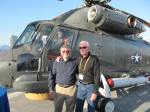 get their medals. I’ll pin them on myself. Besides, I find that being back again in the presence of the guys and family from those days brings an unexpected, unspoken comfort. That may be the real legacy we all took home from that dance.
get their medals. I’ll pin them on myself. Besides, I find that being back again in the presence of the guys and family from those days brings an unexpected, unspoken comfort. That may be the real legacy we all took home from that dance.
Walker A. Jones
Montferrier-sur-Lez, France
A Soldier Talks
PATRICK BIENEMAN
INTERVIEWED BY LOIS SWOBODA, PROJECT VOLUNTEER
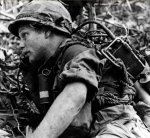 I served in Vietnam from April 1968 to April 1969. I was an Infantryman in Charlie Troop, 1st Squadron, 9th Cavalry Regiment, of the 1st Cavalry Division.
I served in Vietnam from April 1968 to April 1969. I was an Infantryman in Charlie Troop, 1st Squadron, 9th Cavalry Regiment, of the 1st Cavalry Division.
We were a reconnaissance unit made up of mainly three platoons. There were the “RED”, the “White” and the “Blue” platoons. I was in the “Blue” platoon. It was a 17 man infantry recon platoon. The “Red” platoon was made up of Cobra and Huey helicopter “Gunships”. These gunships were armed with thirty eight 70MM rockets and a mini-gun that could fire up to 5,000 rounds of 7.62mm ammunition. The “White” platoon consisted of Light Observation Helicopters. They were the “Eyes and Ears” of our unit.
The White platoon would go into and area and search to see if they could see anything suspicious. If they did, we were deployed to that area. If we made contact with an enemy force we would call in the Red platoon to bring maximum fire on the enemy location. When an enemy unit of a very large size was encountered, a full size infantry company would be called in and we would be extracted.
A second mission of the Blues was to secure any and all downed helicopters in our area and ensure the safe extraction of the crew. If the crew didn’t survive we would ensure that their remains were recovered and sent home for proper burial.
Some experiences just stay with you. One of our helicopters got shot at near a village. We were called in to see if we could find the enemy soldiers that did the shooting. While on the ground another helicopter got shot at. We went to that area to do a search. A young ( maybe 18-20 y/o) female Vietcong soldier was found with her weapon still strapped to her back. She had jumped into a creek and drown herself instead of being captured. She laid on the bank with her eyes wide open and a look on her face as if to say “Why me?”. That face and those eyes still haunt me today in Flashbacks and nightmares.
Another time, we were called out on a mission because some enemy soldiers had been spotted moving towards a fire base. As we flew into the area the artillery was still firing rounds into the area and the cobras were still firing rockets and mini-guns. We were told that some enemy soldiers were still moving. When we landed we were met by a full size (40 man) infantry platoon from another unit. As we began to move forward an enemy soldier was spotted crawling over a log. My squad leader fired at him and hit a Rocker Propelled Grenade (RPG) that was strapped to his back. The grenade exploded and I was hit in the leg with a piece of shrapnel. Our medic (DOC as we called him) came forward to bandage my leg. The lieutenant from the other unit came up to see what was going on. At this same time we had an enemy soldier about 100 feet out in front of us shaking a small tree. Our interpreter tried to talk him into giving up. After a few minutes he yelled something about not giving up and all hell broke loose. While he was shaking the tree and we were focused on trying to get him to give up, his friends set up a “Horse Ambush” around us. They fired AK-47′s, M-1 carbines and RPG’s. The RPG’s were fired into the trees so that when they exploded the shrapnel would go everywhere. The Lieutenant next to me was shot in the head and died instantly. Doc was shot in the head but luckily for him it was more of a grazing wound. Our platoon Sergeant was shot 13 or 14 times up and down his left side. Luckily for him no major organ or artery was hit. I received shrapnel wounds to my left hand, left ear, and my face area. As we moved out of the area and back to the helicopters, Doc and I were the last two out. I was the Radio man and I stayed in contact with the helicopters above us and would pop smoke grenades to let them know where we were and where the enemy should be. Doc was going into shock because of the amount of blood he had lost. He would walk for a while and then he would crawl for a while. We made it out.
The Platoon Sergeant was evacuated all the way to Japan. When he was almost all the way recovered they told him he was going back to the states. He said NO. He wanted to go back to Vietnam because he still had three months to go on his tour. Doc and I were sent to a hospital in Long Ben. While there they removed shrapnel from my face and ear canal. One piece had landed just this side of the ear drum. As we recovered from our wounds each of us returned to our unit.
When I returned to the states I was processed through Fort Lewis, Washington. When we arrived at the Seattle-Tacoma airport were harassed and spit on. We stayed together for protection until our flights departed.
I ran into the Platoon Sergeant some 12 years later. He finished his last three months in Nam and came back to the states. He was getting ready to retire.
I had two pieces of shrapnel removed from my right eye and one piece from my left eye in 1977.
In 1988 I made contact with Doc. He has had a hard time with his Post Traumatic Stress Disorder (PTSD) and had many of us. The Veterans Administration started a PTSD program. The first was at Coatesville, PA. Recently Doc attended a course or the program. While there they took care of all of his needs not just his PTSD. Doc is a better man today. PTSD will never be eliminated from us however many of us are learning to control as much of it as possible thereby giving us a better quality of life.
When I returned from Vietnam I was stationed at Fort Knox, Kentucky. There I met the most wonderful lady. She was also a soldier. She had been trained as a medic but was currently working as an EKG Technician. She worked with many of the soldiers returning from Vietnam especially the burn victims. Her name was Carol Roller. For the past 38 plus years she has been known as Carol Bieneman. She was, is and always will be the love of my life. It was through her dedication and determination that I have been able to overcome as many of my PTSD problems as I have. Even with all of the counseling and classes I have attended and still attend I would not have made the strides that I have without her.
My unit lost a total of 121 men between 1965 and 1972. These were brave dedicated and honorable men. When you first arrived in Vietnam you were a young man. When you left you were a man aged beyond your years. For the first thirty days in Vietnam you were there to fight for your country. For the next 11 months you were there to make sure you and all of your comrades made it home. We never left a man on the field while I was there.
I retired from the Army in 1988. We moved to Winchester, Kentucky. Both Carol and I went to work at the VA hospital in Lexington, Kentucky. Carol was the Administrative Assistant to the Chief of Dentistry. I worked in the Outpatient Clinic as a clerk. Carol and I both did everything we could to insure that the Veterans were getting all of the treatments they deserved and the best treatment as well. We spent many hours at home helping veterans file claims for disability. Carol would give pet names to the veterans. She would call them “Mr. Loverly, Mr. Sunshine or whatever just to bring a smile to their faces. It worked.
Every other year, Charlie Troop holds a Reunion in Dothan, Alabama. Two years ago was our first reunion. The majority of men were married and had been married for a long period of time. There were no drunks. I hadn’t seen any of these guys for almost 40 years and yet it was like we never missed a beat.
“I believe reunions are a part of the healing process” said Carol. “So many of these men (like Pat and Doc) thought they were the only ones suffering with PTSD until they started talking”.
NO MAN LEFT BEHIND PART 1
PAT BIENEMAN 1968-69
July 7, 1968. We were called out on a mission to help extract a LLRP team. The team had spotted some NVA moving toward them and finally had to call in ARA. Between the small arms fire and a couple of erratic rockets all of the LRRPs were severely wounded.
We arrived in the area and were told that the trees were too thick and the choppers could not land. I was sitting behind the door gun on the left side. I got tapped on the shoulder by the guy sitting next to me asking if I wanted to repel to help with the extraction. I asked if anyone had volunteered and he said yes, Fellin. I said I’d go. I climbed over everyone and made it to the other side of the Chopper. I asked if anyone had a “Swiss seat”, “D-ring” or gloves. I was told no.
I stepped out onto the skid. I had my M16 rifle, gas mask, 2 quarts of water, 25 magazines of M16 ammo, 10 smoke grenades and the PRC-25 radio on my back. I took one step off the skid and slid 10 to 20 feet before I let go of the rope. Luckily for me the trees were thick. I slid through the branches which helped break my fall. The next thing I knew I was looking up and my leg was wrapped up in the rope. Someone looked down from the helicopter and I motioned to my leg. I got a knife and cut the rope. Both SP/4 Fellin’s and my hands were burnt. His a little less severely than mine, only because he had on a thin pair flight gloves.
SP/4 Fellin and I assessed the situation. When the Medevac chopper came on station I told him that we had five severely WIAs and one KIA. th He told me to send up the five WIA’s. The medic lowered a Jungle Penetrator and one at a time we loaded the WIAs onto it. When the fifth one was brought on board the pilot called down and said they would be back as soon as possible for us. Red came on and said all of Charlie troop was above for our protection.
It seemed like it took several hours before the medevac chopper came back with just the three of us on the ground. Finally we loaded the KIA (SP/4 Sprinkle) onto the jungle penetrator and sent him up. Next we loaded all of the equipment onto it and sent it up. SP/4 Fellin looked at me and said you go up first. I didn’t argue. The penetrator rises very slowly and it spins very slowly. The whole ride up all I could think is that Charlie was down there somewhere and he’s drawing a bead on me right now and I’ll be dead any second. The total amount of time on the ground was 2 hours and 20 minutes.
When we got to the Evac hospital they put ointment on my hands and bandaged them. Most of the skin had been burnt off my palms, and between my thumbs and forefingers. For the next two weeks, when I went to take a shower I would put plastic bags over my hands and then used rubber bands on them or blousing rubbers. To use the latrine I would use almost a whole roll of toilet paper. It seemed like I couldn’t find any help.
For our actions , we both received the Soldiers Medal. In part the certificate reads “repelled 70 feet from a helicopter hovering above thick jungle canopy”. Thank God it was thick. SP/4 Sprinkle is buried in Mechanicsburg, PA. Two of the others after making it home have since died. The other three understandably don’t want to talk about it. I only know this about the five that were wounded by talking to other LRRPs. Someday maybe they will talk to me.
On December 29, 1968 a chopper went down. The Blues were called out to secure the chopper and extract the crew. As we drew closer to the site, word was passed around that the chopper had caught fire and that there were no survivors.
When we got there the chopper was still in flames and there were three bodies in the middle of the fire. We had to put it out before we could remove the bodies. First we called up and had all choppers in the area send down there fire extinguishers. We used them until they ran out. Then we poured our canteens on the flames. Finally we peed on the rest of the flames.
The bodies were burnt beyond recognition. The bodies bags were brought up. We took the first body and did what was necessary to get him into the bag. It was only when we reached the second body that we found out who had been in the chopper. As we started to move the second body out of the hot spot someone saw a dog tag in the middle of his chest. It read “Kingman, David”. I still have tears come to my eyes today as I remember this. 1LT David Kingman and his crew was ours. We had just eaten a steak and drank a beer with them the night before. We finished getting the third man and left.
NO MAN LEFT BEHIND PART 2
PAT BIENEMAN 1968-69
On December 29, 1968 a chopper went down. The Blues were called out to secure the chopper and extract the crew. As we drew closer to the site, word was passed around that the chopper had caught fire and that there were no survivors.
When we got there the chopper was still in flames and there were three bodies in the middle of the fire. We had to put it out before we could remove the bodies. First we called up and had all choppers in the area send down there fire extinguishers. We used them until they ran out. Then we poured our canteens on the flames. Finally we peed on the rest of the flames.
The bodies were burnt beyond recognition. The bodies bags were brought up. We took the first body and did what was necessary to get him into the bag. It was only when we reached the second body that we found out who had been in the chopper. As we started to move the second body out of the hot spot someone saw a dog tag in the middle of his chest. It read “Kingman, David”. I still have tears come to my eyes today as I remember this. 1LT David Kingman and his crew was ours. We had just eaten a steak and drank a beer with them the night before. We finished getting the third man and left.
Losing anyone in combat is a traumatic event. We Blues accomplished our mission that day. But for many of us that mission was the worst one we encountered. I guess it was because we had partied with them the night before.
NO MAN LEFT BEHIND PART 3
PAT BIENEMAN 1968-69
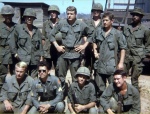 We had a MACV photographer with us for four days and nothing happened. The day he was due to leave, we (the Blues) were called out on a mission. As we approached the area, we were told that an undetermined number of NVA soldiers had been spotted moving in a wooded are and artillery was still firing rounds into the area. We were to meet up a platoon from D 2/5.
We had a MACV photographer with us for four days and nothing happened. The day he was due to leave, we (the Blues) were called out on a mission. As we approached the area, we were told that an undetermined number of NVA soldiers had been spotted moving in a wooded are and artillery was still firing rounds into the area. We were to meet up a platoon from D 2/5.
Once on the ground, there was still machine gun fire coming from the helicopters and we were told that some NVA were still moving around. As we moved forward SGT Blankenship saw an NVA starting to crawl over a log. He fired and hit an RPG round on the man’s back. As it exploded I got hit in the leg with a very small piece of shrapnel. Doc Hipple came up to bandage it. The platoon leader from 2/5 came up to see how bad it was.
While this was going on an NVA soldier about 25 meters out in front of us starting shaking a small tree. Word came from the Colonel in the C&C bird above us to get him to Chu Hoi. I asked him to keep a look out for enemy movement. He said there wasn’t any. After about 5 minutes the NVA soldier yelled out “DO Mammy Chu Hoi” (I take liberty with the spelling) and with that all hell broke loose. It seems that while we were getting this bastard to give up, his friends were setting up a Horse Shoe Ambush around us.
They were firing fast and furious. They used their RPG’s as anti personnel mines by firing them into the tree therefore showering us with shrapnel. One RPG round landed just in front of me. It blew Doc Hipple and I backwards and into a tree. I had a piece of shrapnel go through my left ear and into my neck. Doc Hipple had been shot in the head. Luckily it was more of a glancing blow. A straight on shot, of course, would have killed him. Blue Mike (SFC Guzman) had tried to play John Wayne and sneak up on the NVA. When the ambush was sprung he was shot up real bad. The Platoon Leader from D 2/5 was shot in the head and killed instantly.
Everyone started to move back to an PZ. Sergeants Singletary and MC Cann grabbed Blue Mike and got him out of there. The 2/5 took off and left their LT behind. Cavalier Blue (1LT Guthrie) grabbed him and put him on his shoulder and ran for the PZ. That left Doc Hipple and me. I had been cussing out the Colonel in that small chopper because when the shit broke out I could hardly hear him. I looked up and he was probably at 1000 feet or higher. Just then Cavalier Red came on. He told me to shut up and he would get us out of there. I was to pop smoke and everyone above would light up the area behind us. Doc Hipple was fighting shock, he had lost a lot of blood from his head would. With Red’s help we made it back to the PZ.
LT Guthrie was treated for injuries and returned to duty. Doc and I went to two different hospitals together and then I was sent back to the unit. Doc was sent on to Cam Rahn Bay to a rehab hospital where he almost got killed during a sapper attack. The platoon leader from D 2/5 was sent home. He had had a daughter born the day before the mission.
In the 12 months that I spent in Vietnam, we never left anyone on the battle field. Everyone made it home. I have one photograph the MACV man took. It is a reminder of a battle but it is also a reminder that myself and everyone else made it home.
My Vietnam Stories
BY GREG JAYNE
Camp Evans Ammo Dump Conflagration
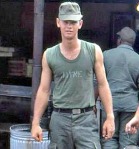 It was Ho Chi Minh’s Birthday, May 19, 1968, I was at Camp Evans over in D Co 15 TC Bn as a OH-13S and LOH-6A mechanic. Camp was pretty rough, there was no mess hall, we’d been scouting up C-ratioins for about a month and now we finally had hot food, I was in the chow line with my mess kit when a mortar hit. Then two more hit, so we ran into the bunkers and after a little while they said it was all clear and we came out. I got my food and ate it, washed my mess kit, went back to my tent and sat down and started to write a letter about the mortar attack we just had.
It was Ho Chi Minh’s Birthday, May 19, 1968, I was at Camp Evans over in D Co 15 TC Bn as a OH-13S and LOH-6A mechanic. Camp was pretty rough, there was no mess hall, we’d been scouting up C-ratioins for about a month and now we finally had hot food, I was in the chow line with my mess kit when a mortar hit. Then two more hit, so we ran into the bunkers and after a little while they said it was all clear and we came out. I got my food and ate it, washed my mess kit, went back to my tent and sat down and started to write a letter about the mortar attack we just had.
My bunk was on the side of the tent that faced the runway and the ammo dump, up on a nice little knoll, the Chinook company was down below us in a bowl that we could see from the bunker. I had just started writing my letter and all of a sudden a giant explosion blew our 20 man tent down on top of us hard. That is not easy to do because they were hurricane and Chinook proof tents, the explosion was so strong it blew everybody from my side of the tent.
We all ended up scattered on the far side, my head and ears were ringing and the tent had collapsed on us. We thought a mortar round had hit right next to our tent and were surprised there was no shrapnel. We crawled as fast as we could into our bunker which was in the middle of the tent, then there were more big explosions. We did not know what was happening, but they had hit the ammo dump, though we did not figure that out for a while.
The thing just kept blowing up and blowing up, giant explosions rocked the camp and we realized they must have hit the ammo dump. There was a slit in our bunker where we could watch everything blowing up and see black smoke from the POL burning. We stayed in our bunker for hours, at one point some one came and told us “under no circumstances” come out of there because one trooper, Davidson had already been killed.
Tracers were flying everywhere, giant pallets of C-4, 105’s, 55’s, 8 inch artillery, LAWS, Mortars were blowing up, it was the most spectacular pyrotechnics, with bullets going off like strings of firecrackers, you could not even imagine. Later on that night, we could see all the armed Chinooks torn up with shrapnel and burning, about 20-25 were totally fried. The next morning was eerily quiet, there was nothing flyable that day.
We were afraid they were going to come through the wire but it would have been suicide for us to be above ground at that point. We hung in the bunkers and took turns watching the explosions, we were lucky we did not take any direct hits. The next day when it finally quit, they came and told us to saddle up and go to the jeeps and trucks (that still ran), they took us and everybody to the perimeter.
I think we stayed there all the next night and the next day we came back and there were unexploded artillery shells everywhere. Every one of our helicopters on the flight line were Red-X’ed full of shrapnel or destroyed. We started putting the company back together and put our tent back up and waited for the suckers to come through the wire, but they never came.
After that, loads of shot up helicopters came in from everywhere, we worked our asses off, that was my Ho Chi Minh Birthday 1968 experience.
How I Tricked the Army to get my Mustache
In January 1968 the First Cav moved from Ahn Khe to camp Evans, we had not been there very long, I was still in D Co15 TC Bn, filling sand bags and building stuff. In the Army nobody was allowed to have a mustache unless it was on your official i.d., and nobody in D Co would give you permission to grow a mustache and put it on your official i.d. So I stayed away from the officers and NCO;s for about 3 days and did not shave that part of my face.
Now it was my chance to make my new mustache official, the i.d. orderly was one guy by himself in a tent, before I went in I got some good ol’ Camp Evans red dirt and darkened my mustache with it. I went in and told him I needed a new i.d., and he took my picture, “wah-lah” official i.d. with mustache on it. I was one of only a few mechanics then to have a mustache and have had a one ever since.
Scouting Around on the Ho Chi Minh Trail
I used to love to fly on the Ho Chi Minh trail, there was always a lot of action there. One day we were scouting around in a Loach close to the Cambodian border, I was the Observer (for a change) up front with an M16. We were flying in dense jungle mixed with open areas, the trail went every which way, it was dangerous territory. The NVA right on the trail were usually no problem, it was the ones off to the sides, hidden in the bushes, trees, bunkers, spider holes, and trenches with arms and gun emplacements that we had to watch out for.
With enough scouting fast and low, we would surprise groups of 10-20 FNG NVA traveling on the trail, pushing bicycle loads of arms (mortars, RPG’s) and rice. They always traveled with their AK47’s slung over their shoulders. When the soldiers would first see us, their eyes would get really big, it was probably the first helicopter they had ever seen in real life. They would try to unsling their weapons, but could not fire in time to get us before we got them. If we were lucky, we would get them all, but if it got too hot, the gunship Cobra would come in.
So this day, I was Observer in the front seat and all of a sudden a guy jumped out of the bushes, right into the center of the trail, and shot us with a shotgun. It blew a big hole in the windshield and I had shards in my face but nobody got hurt. It surprised us and was really weird that he had a shotgun, he only got one round off. Anything (but a shot gun) would have got us, we laughed because we knew how lucky we were and how stupid he was.
The pilot spun our Loach around and the gunner got him with his M60. It happened so fast we did not have a chance to get scared. We headed back to our base at Phuoc Vinh for a new windshield. I liked being a door gunner a lot better than the Observer up front. That night we spent an extra hour on the flight line calming down.
Loose Map
We were flying out of Phouc Vihn on a white team mission, I was the crew chief / door gunner in the chase bird an LOH-6A up at about 1000 ft. My pilot asked our observer to check his map, he started to open it up and it flew right out of his hands and out the open door. I heard over the radio “Oh Sh_t” We called the lead bird and told him what happened.
He came around and started circling low looking for the enemy, I think. I was looking down at the map with my mouth open, it was so pretty, it opened up all the way and started floating in great big circles. We watched it seemed like for 20 minutes, and we were going “Oh no not the trees, not the trees” while waiting for tracers to come up at us any second from the tree line.
We circled it and watched it and timed so we would touch down at the same time as the map. It came down to rest in a big field opening close enough to the trees for small arms fire. The pilot had to land between the map and the opening, he could not get between me and the trees. He had to land far enough away so the rotor wash would not blow the map closer into the trees. I was ready to jump out with my seat belt undone my M60 on the floor, and helmet cord unplugged. When he touched the ground I was gone and ran a hundred yard dash in nothing flat. Grabbed the map and we got the hell out of there as fast as we could.
We all chuckled about it after and vowed never to do that again. I heard later that they took the maps away from the scouts.
Unusual Scout Mission
We flew out of Phouc Vinh our home base, and headed towards the Cambodian border, flying two LOH-6A’s as a white team, I was the crew chief / door gunner in the chase bird.
I thought we were on a regular reconnaissance mission in the Fishook area. Soon I realized we were not stopping in Vietnam and we crossed over into Cambodia, I could tell because all the bomb craters ended. We were ordered not to fire unless we were fired upon while we were in this area.
We flew for quite a while into Cambodia, I wondered what was going on, we were flying tree top level, following a trail. I did not know where I was because I had never been there, and was not told. All of a sudden we came upon a huge NVA camp. I saw several wooden structures with tin roofs, vehicles, and a parade yard. The entire compound was surrounded by concertina wire and a fighting trench.
We made a hard right bank, we could see NVA marching right below us in new uniforms, new helmets, new guns and new boots, we held fire, it was hard. For a scout it was amazing to see, we looked at them and they looked at us right about the same time. Neither ship fired on them, we just got the hell out of there. I could see behind me that they could not get their rifles unslung fast enough to shoot at us. It was pretty wild looking, I thought it can’t be real, it was what I had been scouting for my whole tour, but we could not shoot! Damn it!
We headed straight back to Vietnam, on our way the pilot dove down into the trees because we had been picked up by radar from an anti aircraft gun. To my recollection (I may be full of it) the pilot said there were beeps that came through the radio of an anti aircraft gun lining up the cross hairs on us. The first beep was the horizontal radar target line the second beep was vertical and the third beep would be the direct hit on our ship. The pilot heard two beeps, dove down into the trees and we never heard the third beep. We continued low as we could go and again heard the beeps, so we went even lower and stayed below the trees for a long time before we came up and got the heck out of there. We were glad to get back to the safety of Vietnam.
Later on after the war, I read about a camp that Charlie Troop had found in Cambodia when they went in, the compound sounded just like the one we found that day.
Scouting Around for Food
I was always hungry during the war, both tours 8/67- 4/69 I never had enough to eat. The first two months as a mechanic in Ahn Khe, they had a mess hall, we got 3 squares, and never missed a meal, but when we moved to Camp Evans we had to eat C-Rations for a month while we built it. We would line up and they would hand us a box of C-Rations, a malaria pill and a salt tablet. We also enjoyed many containers of hot cool aid, my favorite was grape.
During this time a guy in our tent told us that they had cut a hole in the chain link fence where the C-Rations were stored. From what I heard they cut the hole in the fence in the back, they would take the C-Rations and put the fence back so the guard would not notice it was cut, I never went, but I enjoyed the spoils of their looting! We had a good stash of C-Rations to supplement our issued fare, spaghetti and meatballs, crackers and jelly with peanut butter were my favorites.
Whenever possible if anyone ever got a hold of some LRRP rations they would share them, these were dehydrated and they were a real treat compared to C-Rations. Boxes of cookies sent from home were always shared, and much appreciated. One time I was mail clerk and gave a fellow mechanic a brown piece of paper with his name on it and the mail bag of crushed chocolate chip cookies. He returned the mail bag after he and his friends enjoyed the crumbs, and said they were the “best crumbs he ever had” (I did not remember this story but was emailed it by him).
We were still at Camp Evans when I moved over to Charlie Troop 1/9th where we also had hot food from a make shift kitchen and no mess hall, we went through the chow line and we ate in our tents. It was army chow, powdered eggs, the usual gruel, and we were still always hungry. One exception was the time we pulled perimeter guard duty in front of the Navy Sea Bee’s compound, they let us eat dinner in their mess hall and it was good. I got to eat there a couple of times, and wondered why the Army couldn’t serve us food like that.
Then we moved to Phuoc Vinh and we had a mess hall again, it was open most of the time, except when we left at first light or came in late, those days we were on our own. Sometimes I did not eat all day, and got back late from flying to a closed mess hall, that’s when we had to scout up our own meals. Each time after flying, the pilot and I would check for damage and count the bullet holes then he would fill out his log book and split. I as crew chief, along with the observer, stayed to clean and rearm the aircraft, and then fill out my log book. If we had any action that day there were usually guys to check out the story and we gathered on the flight line to calm down. Then we would have to figure out where we were going to eat.
Usually when they saw us come in late, the RVN Widows would come out from the compound right next to the flight line to the wire fence and offer us food. There was no concertina wire, just a barb wire fence, and we would pay them for dinner. Most of the time it was some kind of chicken rice soup and it tasted good after a long day of flying. On first light flights though, before the kitchen was open, we were never able to make due for breakfast, and I usually did not have C-Rations stashed, so we went without.
One time the RVN widows invited us to dinner for a celebration at the wire. About 5 of us went, there were a few of our old lady RVN friends (the old ones were the only ones who would come out and talk to us crazy GI’s) and they gave us plates of food. It was rice and boiled chicken, we ate the rice but even though we were really hungry we chucked the chicken in the bushes. We did not want to hurt their feelings, but it was too gross to eat, all skin and bones and kind of hairy in places. The next time I saw them they said “Why you GI no eat your chicken?” I said “I ate mine, it was the other guy!”.
The best meal I ever had in Vietnam, was when me and another guy ended up somewhere (maybe Saigon port) where there was a Navy supply ship. We had heard they would feed Army guys, so we went and asked them if we could eat lunch with them and they said “Sure, come aboard”. We had a great lunch, all we could eat, really good food. I can’t remember what we had, only that it was the best military meal I have ever eaten.
So there I was, one night I had a serious craving for chocolate milk. I went to the mess hall and knew you could get in the back door (near where I washed the pots and pans during KP duty). It was pitch dark, darker than I thought, I was feeling my way into where they had the big giant refrigerators and suddenly I tripped over a guy who was sitting on the floor. He yelled and I yelled and we scared the shit out of each other, then he turned on his flash light and said he was the guard. I said “What? Guard? There is no Guard, I am not a Gook” I think he was an FNG, I did not recognize him. Then he said he had to take me to the CQ and led me back out of the mess hall, he turned to the left towards the CQ, and I turned right and ran off. It was really dark, he did not bother to chase me and I disappeared never to be seen again.
The next day I thought I was going to get in trouble, and was waiting to be called into HQ to have a talk with Top about what I was doing in the mess hall after hours, but I guess the guard was too embarrassed to tell anybody because he had lost his prisoner. I weighed 155 when I went into the Army, when I got done with Vietnam I was down to 135, I should have joined the Navy!
Superior Fire Power
When flying scouts we were always well armed, we had to be.
Scout Crew Chief essentials: M-60 with spare barrel and at least 1000 rounds of standard issue ammunition with full tracers, M-16 with bandolier of ammo, .45 Cal automatic side arm with three 9 round clips, army issue knife, fragmentation grenades, white phosphorus grenades (Willy P’s), red, green, yellow and purple smoke grenades, CS gas grenades, sometimes Chunker and grenades, and if we were going after a bunker complex (and knew it) I’d pack a Bunker Buster or two, Pilot willing.
On our M-60 machine guns we removed the hard plastic butt stock and used a large C-ration can clipped onto the feed mechanism, instead of the cumbersome box that they originally came with, for flying we had already taken the bi-pod off. I held it on my lap and shot left handed, always behind the pilot on the right side of the helicopter (same for both OH-13 and LOH-6A). I shot with the gun slightly twisted down so the rounds would not hit the door frame and bounce back into the receiver, that was a common cause of jamming. When flying you could fire almost continuously, because the wind would keep it from overheating.
For a brief while we mounted 7.62 miniguns, but they did not work out too well for us, they jammed a lot and were hard on the aircraft and loosened rivets. As a crew chief I did not like them, they were real noisy in the back seat and when shooting them I remember seeing the helicopter gauges going into the red
I always kept my smoke grenades on the floor in a box (in case they were hit), I never hung them from a wire because I did not want them blowing off in my face. I kept my Willie Petes and fragmentation grenades on an extra chicken plate on the floor stacked in a couple of wooden boxes. I strapped a chicken plate under my seat and I wore a chicken plate vest, with no plate in the back, just the front. I also had my flight helmet with “Flower Power”, a peace sign and “WAR IS HELL” on it. I never was hit but I had lots of close calls.
If we went out and knew we were going after bunkers, sometimes we would pack a bunker buster or two. We always made sure we were going fast enough and high enough before we dropped one. To do this we would practice making bombing runs with grenades, dropping them into holes, practicing the timing and aiming of them on old bunkers and other targets. We did it at different heights and speeds to get a feel for it.
When we made a direct hit with a bunker buster, it would blow the top off to hell, anybody that was in there was dead for sure. It was dangerous, but the most fun ever in the life of a scout. My air craft never took a hit from our shrapnel, though once I had a Pilot shoot the skid tip with his .38,(that’s another story).
More Random Firepower
One nasty weapon I remember from when I was in Phuoc Vinh was a fragmentation CS grenade, they were new to us in scouts. This grenade had a totally different way to arm it, you had to push down on the button, then pull the pin out, and when you let the button up it was armed, and you only had like 6 seconds before detonation.
When we first got fragmentation CS grenades, they made us nervous. One crew chief did not do it right and it went off inside the helicopter next to us that we were flying with as a white team just outside the perimeter. They were all blinded, nobody in their helicopter could see, so we guided them back by radio. Flying next to us they made it back safely, but they took the crew chief away, I heard it blinded him. This was a powder CS, really nasty stuff and we had to wash the helicopter out with milk to neutralize the gas, it lingered and lasted a long time.
I remember we used fragmentation CS grenades on a bunker, then the Blues went in to check it out and got gassed from the powder. We continued to use them with caution after that.
One time I took out a Thompson machine gun somebody said to “Try this thing out” but the bullets were so slow you could see them when they were flying arching down. By the time they hit the ground they were barely moving, it was no good from the air.
Another time somebody gave me a captured AK-47 to try. The one (and only) time I used it, the Blues on the ground freaked out from the sound (sorry) they got on the radio and asked us what was going on “Are we taking fire?”. I did not use that gun again.
Then there was the time somebody gave me a modified barrel to try out, it was an M-60 barrel with the flash suppressor removed, (I also brought along two good barrels just in case). I did not have much faith in that thing, but the guy who gave it to me said “Yeah it works great”. When I put it on my M-60 and shot it, the thing was really loud, the flames flew out of it about 5′ and the pilot said “What the hell is going on?” I said “I am trying out a new barrel”. I shot it a few more times and we decided it too wild with no advantage whatsoever so I dumped it out the door. When I got back that night the guy who gave it to me said “I never used that thing, I just wanted to see if it worked” and laughed.
We also tested grenades and found that a fragmentation grenade would not go off underwater, but a white phosphorous grenade would. A fragmentation grenade would not go off without arming it when dropped on hard ground from the air, but a white phosphorous grenade would. They were the scary ones, and if they got hit by a bullet they would go off for sure.
Reply from Dave Keel: Greg, I was the pilot of the scout bird when the CS grenade went off in the back seat with the crew chief. Can’t remember his name but he did loose sight in one eye. I believe you were flying with either Tuttle or Mathis. At any rate, none of us on our ship could see or breathe. I flew it back sideways so we could get some air rushing through the ship. I had Tuttle on one side and Gary Mathis on the other guiding us back to Phouc Vinh. We made an emergency on the main runway and the medics came up to get the crew chief. Only problem was that when they approached the ship they caught wind of the CS and couldn’t see or breathe either. Had us strip down and hosed us off.
Another one of your stories brought back some memories of old. Except for the loss of an eye, it was a pretty eventful day that we laughed about later. Dave Keel Cavalier White 68-69
My Time as a Blue
When my time was short, I had about two months left in country, I transferred to Charlie Troop 1/9th Blues to see what it was like, and maybe it was a little safer than flying scouts (I thought). One of my first missions was on February 19, 1969 we went on a recon and landed in the bush, our Platoon leader Lt. Guthrie split us up into two columns, that made me nervous because now there were only 10 guys on each side and we would have to be careful where we fired.
I was carrying the radio in the middle of our column, a Lt. the platoon leader from the 2/7th was behind me, reconning for his company. I noticed that he had a small little hand held radio, that was the first time I had ever seen one of those. We went forward but not very far, I heard some yelling that they had something, shortly after that they hollered for the guy to “Chu Hoi”. I heard on the radio that they wanted to get a prisoner from the guys in the front. I was with Sgt. Blankenship’s column, the NVA hollered back “F@%# you GI!” and then the place erupted in heavy fire and there were RPG explosions.
We hit the deck, and took cover behind a log. I looked around and the Lt. from the 2/7th behind me was dead, shot in the forehead. The battle went on I fired on our right flank, the left flank was our other column, I believe Pat Bieneman was over there with them at the front. Lt. Guthrie may have been over there as well, there were some big explosions, one of our troopers SFC Guzman ran by, he was shot up pretty bad, I do not know how he was running but he did.
I called for extraction, “Get us out”, they said “Get a prisoner”, I called back, used some choice words to “Get us *%#@ out”. They told me I was using improper radio procedure and to get off the radio. I could hear Pat’s radio transmission too, he was saying “There’s people wounded, get us out”, they told him same thing get a “Chu Hoi”. The thing blew up again big, we got really heavy fire and they finally decided to get us out, when they realized we were not going to get a “Chu Hoi”.
Our platoon leader Lt. Guthrie came by me he said “Pull back” he went ahead and grabbed the Lt. from the 2/7th threw him over his shoulder and we headed out. I followed him back and I believe Pat and Doc Hipple were the last ones to make it to the LZ, they both were wounded but were still popping smoke as we retreated. As we were pulling back the 2/7th was coming into the LZ, we loaded our guys onto the helicopters and got out. They found out it was a large concentration of enemy, a lot more than 20 guys could handle.
Another Blues mission I remember was when we went to pick two prisoners from the LRRPs (Long Range Reconnaissance Patrol). There was a river with an island, on the other side of the river were the LRRPs where the jungle was too dense to land. So the only place they could put us in was a shallow part of the river next to the island. As soon as we stepped out of the helicopter we all slipped and fell into the water, the rocks were really slimy. All of the radios got wet, mine included, we lost all communications.
We got out of the water onto the island and headed over to the swift side of the river. Across the river were the LRRPs with the prisoners, as we were doing this I am thinking we are sitting ducks, we are on an island and we can’t get off. Looking at the river we did not know how we were going to get across, it was really swift. I think the first one to try to go across was Lt. Guthrie and it swept him way down the river, we all thought he was going to drown. His steel pot was floating over his head, it was amazing how he made it out of there on to the other side, way down the river.
We threw a rope across to the LRRPs, and another guy tried to cross, but lost hold of the rope and got swept away down river, almost drowning in the process. That was it, they called off the mission and picked us up off the island, we did not get the prisoners that day.
I was proud to have been with the Blues in Charlie company they were an amazing bunch of guys, and Lt. Guthrie was a great leader.
Pulling Guard Duty
Pulling guard was one of the worse duties we EM’s had in the Army, I had to do it as a Scout Crew Chief, as an infantry Blue, as a mechanic, in basic training, and in Texas when I got back to the states. I did not have to pull guard at Fort Rucker, aircraft school was easy duty. It was always hard to stay awake after a long day, especially when I was in the Blues, we pulled guard duty almost every night, that was one of our main jobs, guarding the perimeter.
We did our guard duty in shifts, two of us slept in the bunker, and one of us stayed awake up on top, and would only get about 4 hours of sleep on guard duty nights. During our turn we passed the time looking through the starlight scope watching for movement, trying to stay alert smoking cupped cigarettes. If we saw movement we could shoot at it (after getting permission) or call the 50 cal. jeep over to shoot at it, we could also request from the CQ to have artillery shoot flares outside of the wire in front of our bunkers.
Radio procedure was to call in to the CQ every hour and identify ourselves with our bunker number and give them a SITREP. We also passed the time talking to each other on the radio, not just to stay in touch, but with funny conversations, telling jokes, chatting, killing time, sometimes we got in trouble for too much talking. They would come over the radio and tell us to shut up, at those times we were anonymous.
One night in April ’69, Phuoc Vinh I had to pull guard duty out on the perimter, that night for some reason Charlie Troop was having a Barbeque, and they brought us guys on guard duty 2 steaks each. I ate one steak and left the other one laying on top of the bunker on a paper plate and went down in the bunker to sleep. Later when it was my turn to pull guard in the middle of the night I woke up and climbed out of the hot bunker, there were no lights since we were on the perimeter, we went by feel and the light of the stars. I sat down on the bunker to eat my steak, it tasted pretty good but something was odd, it was too crunchy. In the pitch dark, I took a chance and lit my authentic Zippo (that had engraved on it “Yay though I walk through the shadow of the Valley of Death, I fear no evil because I am the baddest Mother F_ _ _er in the Valley”) lighter to see what it was. My steak was crawling with big red ants, completely covered. So without hesitating, I wiped off the ants and finished eating, boy was it good.
Another night I was really worn out, it was only 2 weeks before I DEROSED, there I was pulling guard duty on top of the bunker out on the quiet part of the perimeter (not in front of the artillery which was noisy all night) struggling to stay awake. I must have drifted off, because the next thing I remember was Major Felton waking me up and writing me up with an Article 15, he fined me 50% of my $280 pay check for two months and confined me to the company area. I felt bad about it but I had been there a long time, 18 months, and was pretty damn tired, I had done the best I could.
After the war back in Fort Hood, Texas our guard duty was to walk around the commissary in a big old parking lot with no cover for 4 hours, walking around and around in the middle of the night, it was so boring. I hated it. That was the worst guard duty I ever pulled, worse than Phuoc Vinh, but I was glad to be home.
Black Stetsons, Golden Sabers
BY LIONEL DE LA ROSA
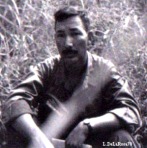 In November 1965 I got my orders for Vietnam. In less than 24 hours I left Germany during one of the worst snowstorms of the year and arrived into the hot hell of Vietnam. It should have been an omen, but as a 30 year old career soldier I was used to that. When I arrive in RVN I volunteered as a door gunner and was assigned to Headquarters Troop, 1/9th Cav., 1st Cavalry Division.
In November 1965 I got my orders for Vietnam. In less than 24 hours I left Germany during one of the worst snowstorms of the year and arrived into the hot hell of Vietnam. It should have been an omen, but as a 30 year old career soldier I was used to that. When I arrive in RVN I volunteered as a door gunner and was assigned to Headquarters Troop, 1/9th Cav., 1st Cavalry Division.
The day we flew out to Pleiku to join the troop in the field it was so foggy that the birds were walking and all other flying creatures were grounded yet we took off without a care in the world. Hey, I had never been in a helicopter and it was my first ride! Needless to say we never got there that day. An hour later we were back in An Khe after almost crashing into a mountain.
I finally joined my unit the next day and was assigned to be the door gunner on the Squadron Commanders chase ship. Our ship had no machine guns for the crew chief or gunner so we used our M-16s and a clip fed, three round grenade launcher. The chase ship had flexible turrets mounted on each side with two machine guns mounted on each turret.
The next three months proved to be quite routine. We followed the command ship where ever it went, dropped food and ammo to the troops and covered insertions of the Blues and LLRPs. Then on March 30th things changed. On that morning my crew chief came running up yelling that A Troop had spotted a group of NVA in trenches at the base of Chu Pong Massif, in the Ia Drang valley. I couldn’t understand what all the excitement was about since the scouts did that every day. That changed when I saw all the pilots and crews scrambling to their aircraft.
The Air Force was pounding the area when we got there and when they were finished both the command ship and the chase ship made runs , firing into the tree lines. I could see no enemy but I dropped several grenades as we flew over the tree line anyway. Adrenalin excited my body and the smell of gun powder filled my lungs.
As the B Troop Blues made an assault we again made a run as the lift ships made their approach. We gained altitude and began to circle as the blues assembled and entered the tree line. The situation seemed quite routine and things seemed to have settled down, but not for long.
Over the sound of gunfire, Blue Mike reported that they had captured a NVA prisoner. Shortly Blue Mike again reported that according to the prisoner they were surrounded by a thousand NVA. Too many even for the elite blues. They were ordered to break contact and return to the LZ to be extracted by the slicks. We continued to circle the area. The pink teams had been on station for some time and were running low on fuel and ammo. Some of the scout pilots were actually shooting their .38s and throwing c-ration cans at the enemy.
As the lift ships made their approach to extract the blues we made a gun run to cover them. As we finished our run all hell broke loose. The NVA began firing machine guns and RPGs from the tree line. Two lift ships were hit and were on fire. Making some drastic maneuvers and dropping several hundred feet our two gun ships made another gun run and I dropped some WPs on the tree line.
Below one could easily see the green and white tracers crisscrossing the LZ. On one of the two remaining lift ships with the pilot was dead and the co-pilot badly wounded the crew chief flew the helicopter out. (In the fall of 1966 the crew chief was awarded the Distinguished Flying Cross, one of the few enlisted men to receive it).
The remaining ship finally lifted off and we were there to escort him but time was running out for this ship too. With wounded aboard and the ship badly damaged, the pilot tried to make it to the Plei Me Special Forces camp. Fate intervened and half way to Plei Me the helicopter lost power and crashed into the jungle.
As we slowly circled the crash site I saw a clearing about a hundred or so yards away and asked the pilot to drop me off so that I could try to help the crash victims. We were deep in enemy territory and the only ones anywhere nearby. It was decided to land and bring them out. While the pilot stayed with the ship the co-pilot (an Air Force liaison captain), the crewchief and I went to give aid and dress the wounded. It took nearly all afternoon to bring all nine men out. Luckily two scout ships dropped off their observers to help. It was dark when we finally finished but we did not lose a single man.
Two or three days later while flying contour from an artillery base, I spotted what appeared to be either a monkey or a gook on the ground near a tree line. After reporting the siting to the pilot we made a wide turn and returned to the area and I dropped a WP on the approximate position. As we again circled back to check the area a large NVA unit opened up on us from the tree line. Rounds were hitting our chopper and I returned fire with my M-16. The pilot quickly dropped below the skyline as I continued to fire at the blinking lights. Although I could actually see the NVA standing and kneeling, I aimed at the muzzle flash.
It shook me up so badly that I was still firing as we climbed out through a thousand feet and a mile away from the the ambush. When we landed back at the artillery base my body started to shake so much that I could not even put a cigarette in my mouth and trying to light it was even worse.
The NVA unit got the worst of it. They never made it to the artillery base camp which was their target for a night attack. A mile or so from the ambush site they were annihilated by our gun ships as they tried to flee. They left 15 KIA in the tree line.
Shortly after that we returned to An Khe. We had been in the field since December and the aircraft needed maintenance. While back in An Khe we participated in the killing of some elephants. Believe me, it’s next to impossible to kill an elephant with an M-16.
Instead of returning to Pleiku we were sent to Bong Son. I did not like Bong Son, besides the Viet Cong and NVA there were civilians in some of those villages who would shoot at us. Okay, maybe they weren’t civilians but they dressed like them, heck some were even women and kids!
I don’t know which was worse, the highlands or Bong Son. The very day we flew to Bong Son there was a convoy ambush. That night while dropping ammo to a ground unit along a ridge line we got shot at by a .51 cal and took a round through the rotor blade. Later that same night we were mortared.
A couple of weeks later I became the Squadron COs gunner after his gunner was wounded near a village called Tran Son. A large NVA unit that had escaped earlier in the week was surrounded by our troops and the battle was in full swing. An hour after becoming the COs gunner we were nearly shot down. The crew chief, co-pilot, artillery FO and communications NCO were all wounded. That didn’t stop the CO or even slow him down. He went and got another bird and we were back in the combat arena.
And so it went. I never had the pleasure of serving under Col. Stockton but I did serve under two great commanders. Colonels Shoemaker and J.C.Smith. Had Rambo been a real war hero rather than a movie character either of these men would have made him look like a boy scout.
It was widely known that the 1/9th was not very liberal with awarding medals to its troops. There were just too many troopers in the 1/9th who daily went above and beyond the call of duty in doing their job. I still remember the OH-13 who played hide and seek with a .51 and finally got it. Or the blue platoon that was regularly out numbered when they made contact. Then there were the lift ships who under heavy fire always came in to pick them up. Those ‘angels from hell’ gun ships who were always there when you needed them and always seemed to put their fire on the right spot. The mechanics who (at the time I wished were not so fast) patched up the birds and kept them flying.
Well, I guess our helicopter crew was just like everyone else in the squadron, (if not in the entire 1st Cav Division) a close knit group of deranged individuals who were determined to “just get the job done”.
Maybe this is the reason that the 1st Squadron of the 9th Cavalry is the most decorated unit that served in Vietnam.
Recon Mission In Cambodia
BY ROBERT L. STRUCK
Danger on The Ho Chi Minh Trail
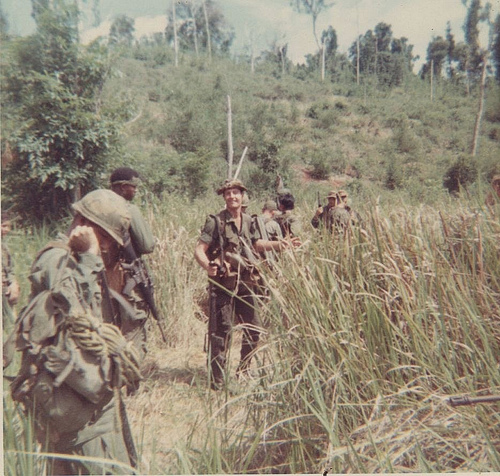
It was May 23, 1970, and we were walking single file (spaced about six feet apart) down what appeared to be a truck route in Cambodia. Most of these roads or paths were not visible from the air but our guys flying Scouts spotted this one and wanted the Blues to check it out.
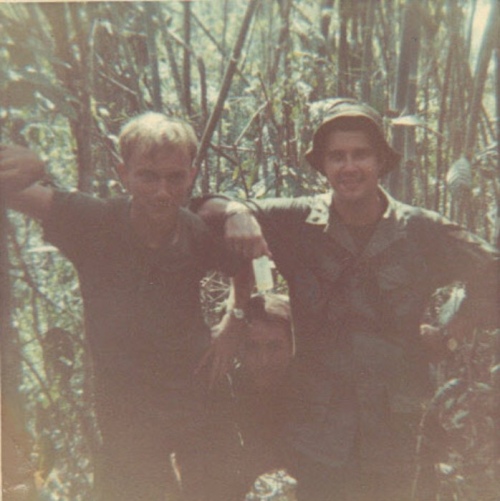
Dave Roger, Dave Parkhurst & Larry Pruett
The following is a first-hand account of that mission by Sgt. Larry Pruett, Charlie Troop 1/9th (Blues) 1969-70:
We were in Cambodia on a wide trail. I was walking point that day, and we had a Cambodian scout with us. As we moved forward, we saw a VC running ahead of us. We moved up and saw a bunker up the hill, and shot the front of the bunker up with M16, M60 & M79 fire. We moved up to the bunker and stuck an M16 in and sprayed 20 rounds. One of the guys got on his knees and looked in but saw no one.
After about ten minutes or so we decided to move on down the trail. As I walked back in front of the same bunker that was supposed to be clear, I got shot with an AK47 from ten feet away. One round went through the armpit the other through my shoulder coming out the back knocking me down and my M16 out of my hands. I crawled up the hill away from the front of the bunker everyone else went down the hill.
There was a brief firefight then my guys tried to throw grenades in from 30 feet away and got shrapnel from the grenades. I had to wave them off and yelled I’ll do it. I crawled up to the bunker, leaned over and threw in a grenade. I don’t know if it hit the bamboo in front or the VC threw it out. I did hear someone yell he threw it out. I crawled up again, and this one went in and blew up the bunker, and I jumped up and ran down the hill to my guys and Doc Hipple. We humped to the nearest open LZ and got out.
Sgt. Pruett received the Silver Star and Purple Heart, and a number of Blues were awarded the Army Commendation Medal with “V” for that day.
Down Bird Mission Gone Bad
BY ROBERT L. STRUCK
‘Friendly Fire’ close call
Once again, one of our Scout birds got shot down, and the Blues were called to either rescue or recover the crew.
It was a typical rappel mission as there was no place near the crash site to land our choppers. I was Blue India (the guy with the radio) so I was one of the first of six Blues to rappel down into the jungle. The details of this mission are still foggy to me, but I do recall receiving sniper fire
We always had one if not two Cobra helicopter gunships circling high above us in the event, we needed extra firepower. These Cobras (Snakes) were equipped with mini-gun and rockets and were very much feared by the enemy.
Lt. Michael La Chance (Blue) was our platoon leader. He decided it was time for some help from above, as we had no idea how many unfriendlies we were dealing with. La Chance grabbed my radio and called one of the Cobras for a gun-run, using a smoke grenade to mark our position.
Suddenly, bamboo was flying everywhere with explosions all around us. It sounded like a sewing machine on steroids, and the whole jungle began to rip apart. My first thought was Charlie was throwing some big stuff at us. I then looked up and saw our Cobra directly above pulling out of a gun-run, and realized what happened. The smoke that marked our position must had drifted too close to our position and the pilot came in right on top of us with mini-gun and rockets.
A few of our guys were injured by that incident but nothing serious. I lucked out again with only the crap scared out of me along with the rest of the Blues. After all, I was a FNG and just twenty years old, half way around the world in a strange land.
The Cobra pilot (WO 1 Myron R. Lamont) was grounded for a short while because of that incident. In fact, he was beating the bush with us on our next recon mission and made a comment on how thick the jungle was when on the ground…
Suspected NVA Outpost
BY ROBERT L. STRUCK
We came in ‘HOT’ with our gas masks and flack jackets on
Our Scout birds (White platoon) had spotted heavy enemy troop movement in an area next to the Cambodia border, and the ‘upper brass’ felt it was time for the Blues to check it out.
Because we would be grossly outnumbered by the unfriendlies, CS gas (tear gas) was pumped into the area just moments before we were inserted. The CS gas probably came from an artillery battery at a nearby US firebase. The tear gas apparently did the trick. The bad guys di di maued (left quickly) before we got there so we were met with no resistance. As soon as the air was clear enough we removed our gas masks and began to recon the area.
Our point man (Weaver) discovered an entrance to an underground tunnel. He pulled the pin on a hand grenade and tossed it into the opening. After the dust settled, he decided to enter the tunnel for a look around. After a few minutes Weaver came out and said there was a small dug-out area relatively close to the entrance that contained papers and other things. A couple of us went back in with him to retrieve the items.
What we had found was important NVA documents and some NVA/Vietcong war medals. Our mission was complete with those findings, so we called for our Lift birds to pull us out before ‘Charlie’ came back.
I confiscated two of the NVA/Vietcong medals and mailed them to my girlfriend back in Iowa for safekeeping. She never did receive them…
Down Bird
BY ROBERT L. STRUCK
Quick Rescue ( usually recovery) Team
As we walk the short distance from the helipad to our hooch someone hollered out those all too familiar words “down bird”. We all did an about face and scrambled back to our choppers, which were by then fully cranked and ready to go. We were informed that one of our Scout birds was downed by ground fire in Cambodia.
We all knew it would be dark, by the time we reached the downed Loach but that didn’t matter in this life or death situation. There was always a chance the crew of the downed bird survived the crash and needed our help, so we had to reach their location as quickly as possible.
When we reached the area of the crash our Lift pilot hovered our bird over the treetops in position for us to rappel. Only three or four of us Blues rappelled into the darkness of the jungle that night. I had a radio on my back when I went down and recall getting tangled up in the jungle’s undergrowth before my feet hit the ground.
Then the real drama began! It was our understanding, there were no
friendlies in this part of Cambodia, which clearly made it a ‘free-fire zone”. We heard movement not far from our position, and it had to be one of two things. Either the crew of the downed bird survived or ‘Charlie’ was closing in on us. We were ready for the worse-case scenario which was of course ‘Charlie’. There was a slim chance the crew survived the crash so we expected the latter.
That’s when a call came over my radio “hold your fire”. The movement was a squad of friendlies from a grunt company that beat us to the downed bird.
We stayed the night in the jungle and were extracted by our Lift birds the next morning…
POW Rescue Mission
BY ROBERT L. STRUCK
Suspected POW Compound in Cambodia
Army Intelligence felt they located a POW (Prisoner of War) compound in Cambodia and plans were being drawn up for Charlie Troop, 1/9th to storm the suspected compound and free the prisoners. The rumor spread quickly in our Blue platoon and we just waited for the signal to go in.
I wrote a letter to my girlfriend back in the ‘World’ explaining what was about to happen, and it could be the last she would hear from me. Based on the nature of this mission I feared our Unit would suffer high casualties.
When our Scout birds confirmed it was indeed a POW compound, we planned to go in early the next morning. The NVA apparently got wind of our plans and abandoned camp that night along with the prisoners and headed North.
That letter never made it to it’s destination, probably because of the highly classified information it contained. A few other letters I mailed back to the ‘World’ were opened and censored before they were delivered with parts actually blotted out…
Firat Taste Of Combat
BY ROBERT L. STRUCK
‘We Came in Hot’
Every morning in April 1970, our Lift birds would crank up at the helipad in Phuoc Vinh. Fifteen or so of us Blues would board (five or six per bird) and fly to Firebase Buttons, which was about a half hour flight to the northwest of Phuoc Vinh. At Buttons, we sat and waited for word of our next mission, whether it be a recon or quick recovery mission for a downed helicopter. My radio was always tuned into the same frequency as our two Scout birds buzzing around the jungle at tree top level looking for enemy activity.
One morning a call came over the radio that a group of Lurps in the area made contact with the enemy and needed reinforcements. Lurps (U.S. Army LRRP / Rangers) were heavily armed long-range reconnaissance teams that patrol deep in enemy-held territory. Our choppers cranked up, and we were on our way.
I had to deal with emotions, I had never before experienced on that short flight. This was actually the real thing and not a drill. This is what all that training was for and why a certain amount of brainwashing was necessary for this type of duty. Turning back was not an option.
The Blue next to me on the chopper was a seasoned combat veteran, and he knew I was a FNG, so he gave me a quick briefing as what to do. His instructions were to take my M-16 off the safe position and flip it to ‘rock-n-roll’ (the automatic position) and start firing into the jungle as soon as my feet hit the ground, if not sooner.
Each Huey (chopper) had a crew chief and door gunner on board, one on each side of the bird. Both these guys were equipped with M-60 machine guns, and they both opened up as we approached the LZ (Landing Zone). That was known as ‘coming in hot’.
I jumped off the bird and along with the other Blues, started firing frantically into the jungle. I’m not sure if we were receiving enemy fire because all of us had opened up at the same time and all hell broke loose.
That’s when I felt a hot stinging sensation in my upper back. I swung my right hand around and pulled a hot piece of shrapnel out of my left shoulder. A fellow Blue not far from me took some shrapnel in his stomach about the same time he fired his M-79 grenade launcher and hit a nearby tree. There’s a good chance, that’s where the shrapnel came from.
It wasn’t long after that all was silent, and we hooked up with the Lurps. They had the upper hand in that firefight as they came out without a scratch. Two or three unfriendlies made the ultimate sacrifice for their cause.
That was the first time I saw ‘Charlie’. Their lifeless bodies laying there in front of me, stripped of their clothing and any possessions they had with them. The Lurps took everything from them to have as sourvineers.
I then took my Kodak 126 Instamatic Camera out of my pocket and took a picture of one of the bullet-riddled bodies on the ground and later mailed it to a friend back in the ‘World’. To this day, it still bothers me why I did that…
Cambodia Incursian
BY ROBERT L. STRUCK
The darkest day of my Vietnam Tour was May 6, 1970
I knew something was up when we were instructed to board our choppers extra early for our daily flight northward. We normally flew to Firebase Buttons and waited for a mission, but this day proved to be different. Our birds continued north and landed at Bu Dop, which was one kilometer (1000 meters) from the Cambodian border.
When we landed, we were briefed on our mission of the day and why the men of Charlie Company, 2nd Battalion, 7th Cavalry of the 1st Air Cav Division had congregated on the airstrip. At 7:30 AM an assault into Cambodia was scheduled and our Blue platoon would be QRF (Quick Recovery Force) for downed birds. Our Scout birds and Cobras (Pink Team) would lead the way followed by Charlie Company, 2/7th, inserted by the vast number of choppers lined up on the airstrip.
Just before liftoff, I had a brief conversation with a young soldier cleaning his M-16 in preparation for the invasion. He couldn’t have been a day over eighteen and appeared to be extremely nervous. He told me he considered shooting himself in the foot to keep from going on the mission.
All the Hueys cranked and at exactly 7:30 AM the sky was filled with birds heading to Cambodia with 1st Air Cav Skytroopers.
I was the Blues radio guy that day and a downed bird rescue mission was almost immediate. Our two Hueys cranked and we were on our way. One of our Scoutbirds got shot down as the invasion began.
Army news reporter (PFC Scott Long) was at Bu Dop that morning to cover the invasion. He managed to jump on the same bird as our platoon leader Lt. Michael La Chance, myself and five other Blues. He recorded the action as it happened on a cassette player while seven of us Blues rappelled down into the jungle.
WO Dave Farrell was the A/C (Aircraft Commander) of our bird. This was only his second mission as an A/C and did a great job positioning his ship in a high hover while we rappelled.
Our other Huey with Blues on board beat us to the downed bird site and crashed as they made their approach. It wasn’t clear if they got shot down or simply lost power. Now we had an additional downed bird on this mission. Our chopper hovered above the downed Huey (which did not burn on impact) while seven of us rappelled down to rescue our fellow Blues. CPT Rhett Lewis (one of the Huey pilots) and three Blues were injured in the crash and medevaced out.
This is when there was a turn of events. Our Medic decided conditions were too dangerous to continue and wanted all of us extracted without completing our mission.
It was then decided which Blues would continue on with Lt. La Chance. I had no choice because I was the radio guy. Five of us made our way to the burning Loach which was about 30 meters away, but seemed much farther due to the thickness of the jungle undergrowth. When we arrived, we discovered the pilot and crew chief had died in the crash.
We radioed for a Medevac chopper and when it arrived the crew lowered two body bags down to us. After placing the bodies into the bags, they were lifted up to the chopper hovering above us. We were constantly watching for enemy movement as we knew the unfriendlies had to be in the area.
Our mission was complete except for getting ourselves out. The only way we could be extracted was by the McGuire rig. There were five of us and three men per trip was the max, so that meant Lt. La Chance and I would be taken out last. We radioed for a Lift bird (Huey) equipped with McGuire rigging ropes on board to extract us.
When they arrived, three ropes attached to floor of the hovering chopper were dropped down to us. Three Blues attached themselves to the ropes and were lifted away to the nearest friendly LZ. That left Lt. La Chance and I all alone waiting for our chopper to return. Each minute seemed like an hour as we stood back to back watching for enemy movement with thoughts of Charlie closing in. My worst fear was the two of us occupying a room at the Hanoi Hilton (POW).
The jungle got very quiet with an occasional bamboo stick falling to the ground. My imagination ran wild and I opened up with my M-16 on nothing more than suspicious sounds. That surely gave our position away.
Then suddenly that all familiar chopper sound could be heard, in the distance. Our Huey made its approach and hovered above us. They dropped two ropes down, and we attached them to our rappelling ropes, we had tied around our chest. We were then flown through the air (McGuire rig style) to a safe LZ.
To this day whenever I hear a chopper in the distance, I have flashbacks of that memorable day in Cambodia.
There is much more to this story than the Blues efforts to rescue the men that were shot down.
Crew Chief/Gunner Gary McKiddy performed an act of ‘heroism’ that cost him his life. He was killed that day along with the pilot, WO1 Tommy Whiddon when the helicopter they were in was shot down. Gary was either thrown or jumped free of the crash upon impact with the ground. Although the chopper was burning, Gary risked his own life when he returned to the chopper and retrieved the copilot, Jim Skaggs, and carried him to safety. Gary again returned to the chopper, even though it was burning out of control and ammo from inside of the chopper was “cooking off”, in an attempt to rescue the pilot, WO1 Tommy Leon Whiddon. As Gary entered the chopper and positioned himself to retrieve the pilot, the fuel cells exploded and killed both men. When the rescue team arrived, Gary was found stretched across the seat that he had just removed Skaggs from, laying across Whiddon with one arm behind him. The transmission had fallen across Gary’s back pinning him in. The military tells us that this happened after the explosion, and he was already dead when this occurred.
Gary was awarded the Silver Star for his action, however there is a bill pending in Congress that if approved will provide for Gary to receive the Medal of Honor for his actions; the bill is HR 369. Gary had flown more than 650 combat missions and was awarded 37 medals during his 6 months in Nam.
In August of 1999, the First Air Cavalry Division dedicated a barracks at Fort Hood, Texas, in honor of Gary Lee McKiddy. Inside of the 400 person building there is a day room that displays pictures of Gary from the time he was a baby until soon before his death, as well as a trophy case with all of Gary’s medals in it. A beautiful plaque on the outside of the building tells the story of his heroism.
Downed Bird Audio (May 6, 1970)
Mortar Attacks
BY ROBERT L. STRUCK
A helpless feeling
One of the most helpless feelings I experienced in Vietnam is when our firebase was being mortared (incoming) and hoping the next rocket wouldn’t be a direct hit. It almost seemed safer on a recon mission in the middle of the jungle.
An incoming round exploding is a noise forever embedded in your brain and for years to come you could be affected by similar sounds.
When I first arrived in Phuoc Vinh mortar attacks were quite frequent. It seemed like we got hit at least three times a day, and Charlie had our Company Area zeroed in.
Usually a siren would blow to indicate an incoming mortar attack. When it sounded you scrambled to the nearest bunker for protection. The siren would sound again to indicate the attack had ended and all was clear to exit from your bunker. That’s when you had to be careful because Charlie could also hear the siren, and he would lob a few more in.
One morning a bunch of us Blues were standing down at the helipad waiting for our choppers to arrive to fly us out for a recon mission. Charlie started shelling the helipad area and a mortar landed within six feet of where we were standing. There was a row of barrels filled with sand between us and where the mortar landed. That was a close one to say the least!
Then there was the night Charlie threw some big stuff at us (Sept. 12th 1970). The sound of 122mm rockets slamming down in the area around the hooch where I was sleeping woke me up within seconds. I rolled out of bed to the floor and low crawled as fast as I could to the nearest bunker.
When the attack seemed to be over, we came out of the bunker to access the damage. Our hooch did not take a direct hit, but a Red platoon hooch across the road did and was on fire. I then went back to check my AO ( sleeping area). I would not be writing this now if I wouldn’t have woken when I did. My pillow was peppered with shrapnel holes along with an Iowa State flag which was hanging on the wall above my bed…

